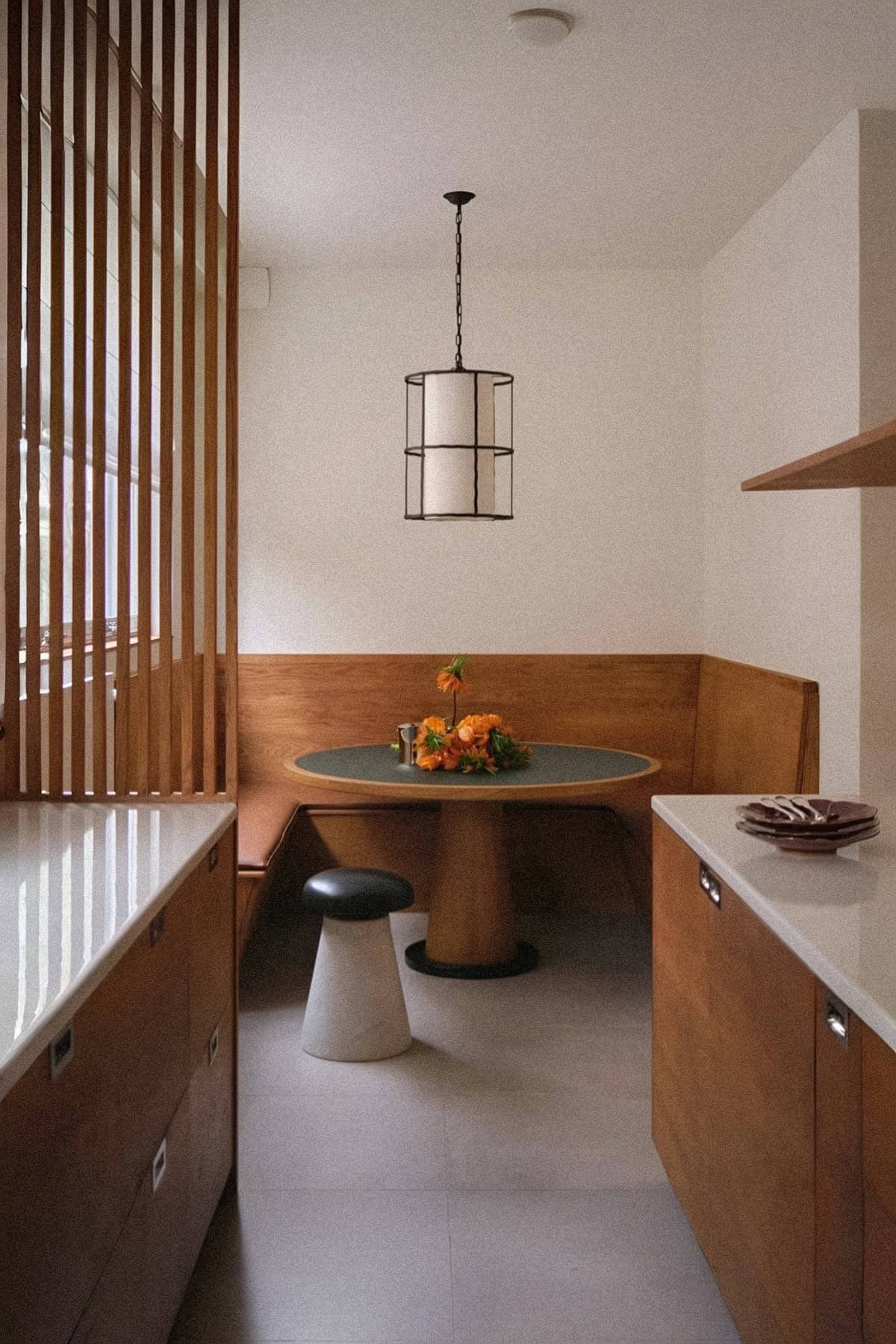
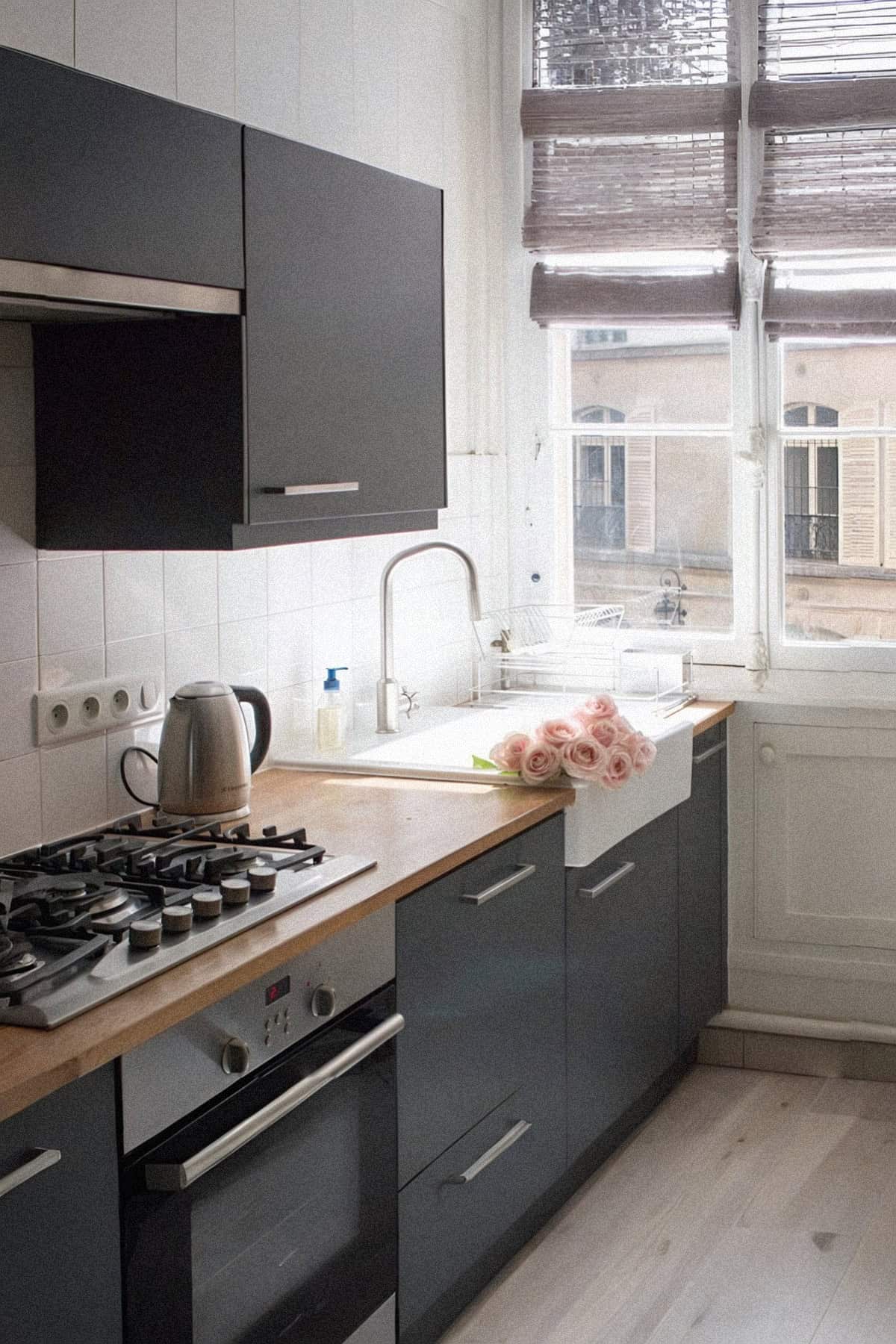
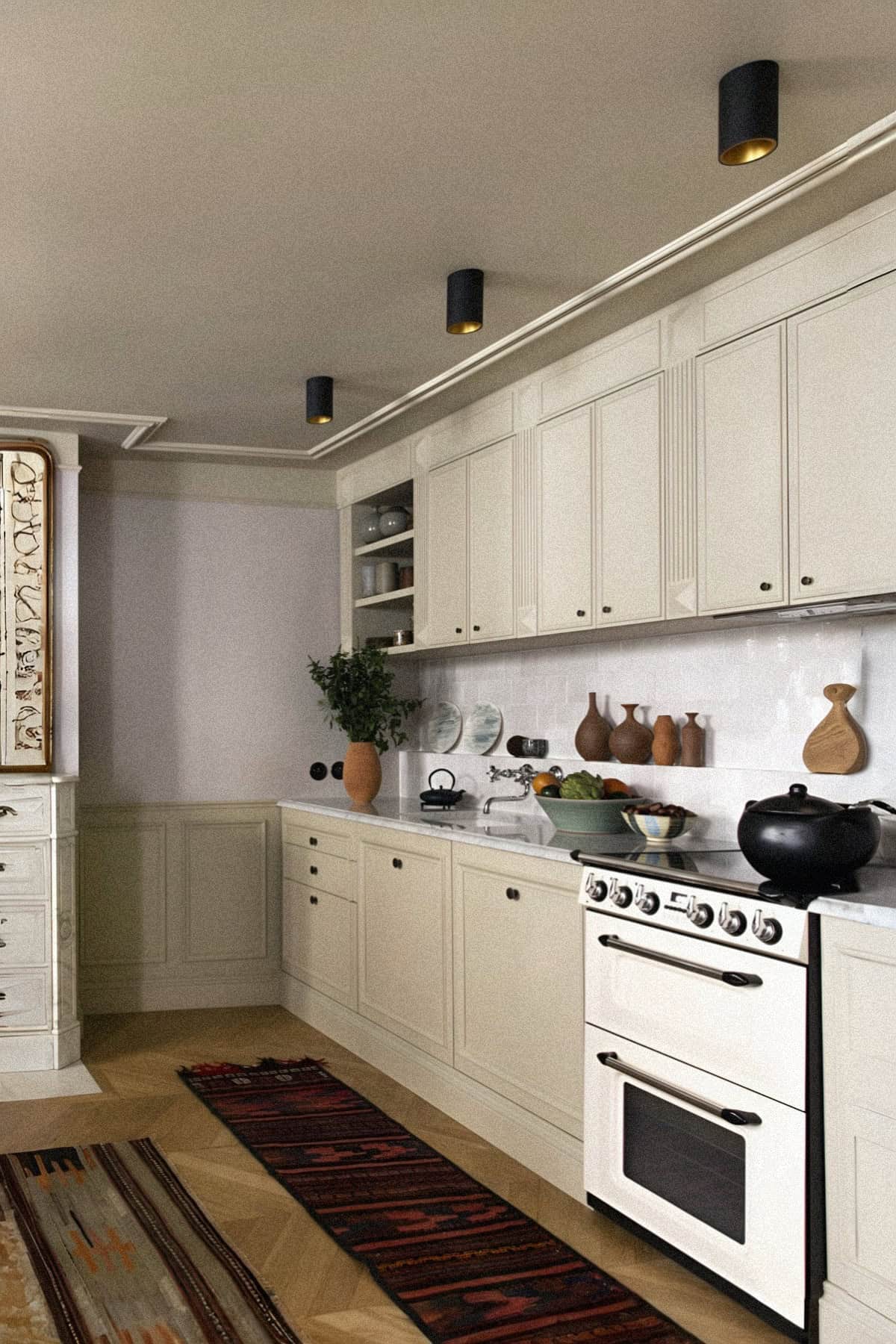
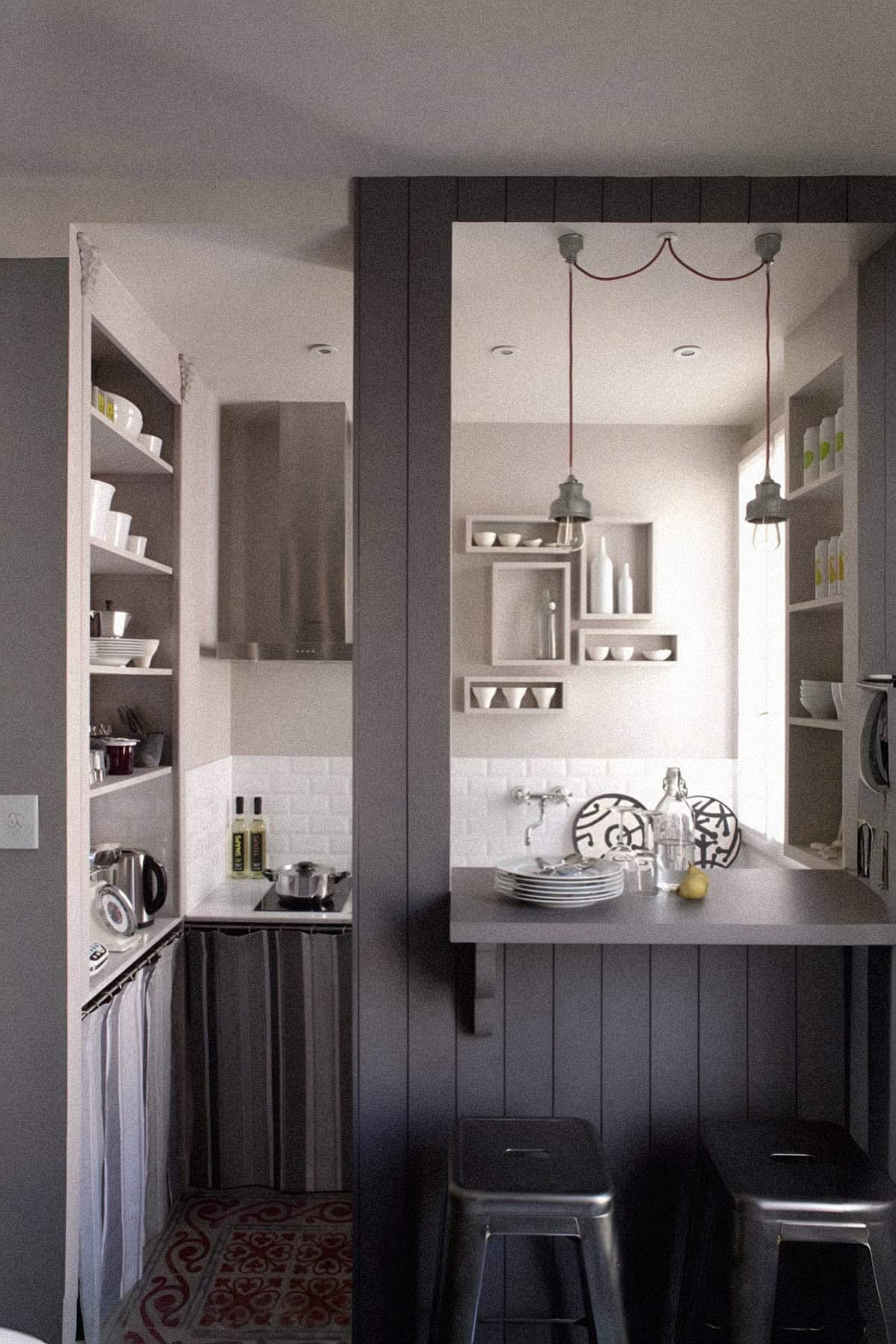
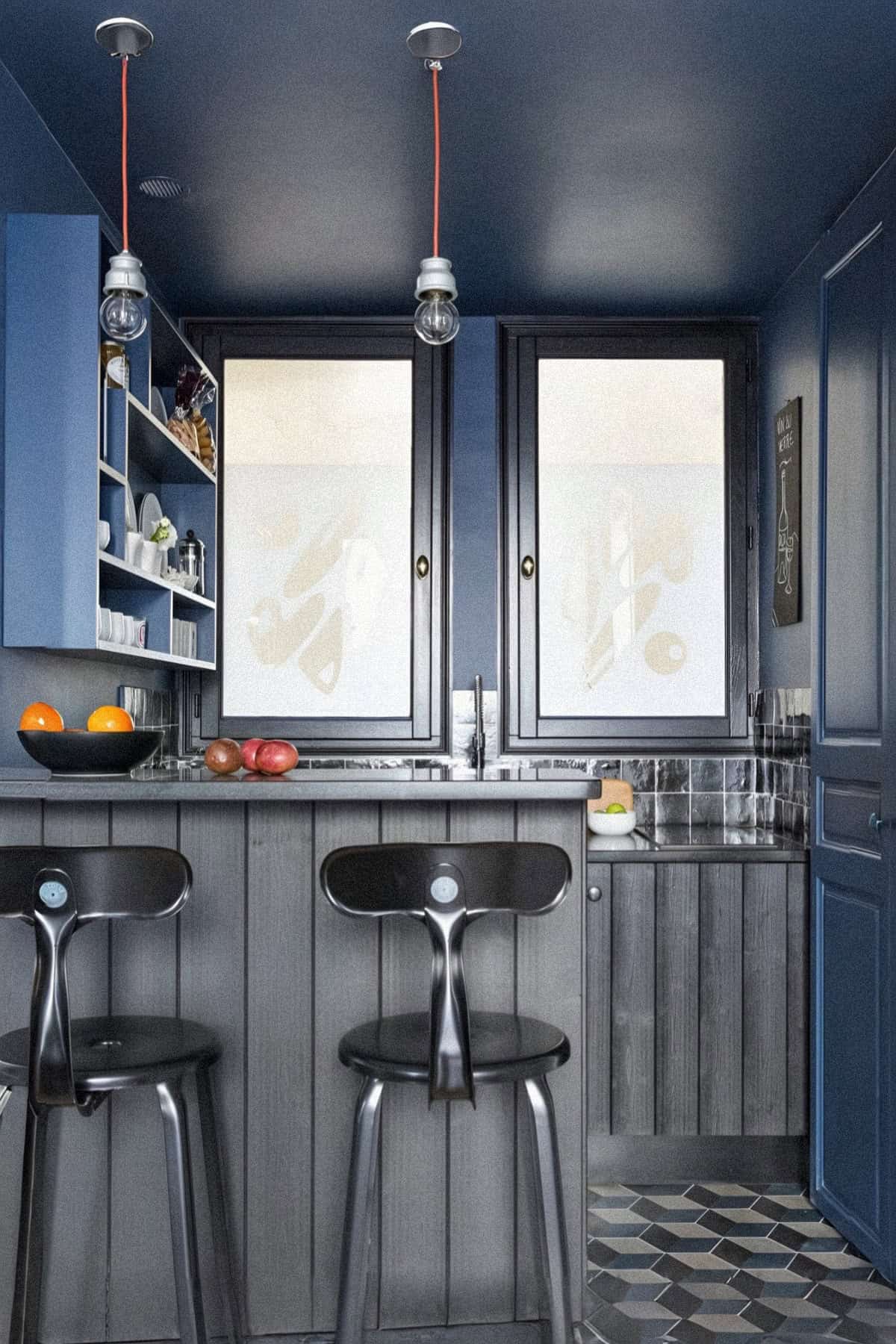
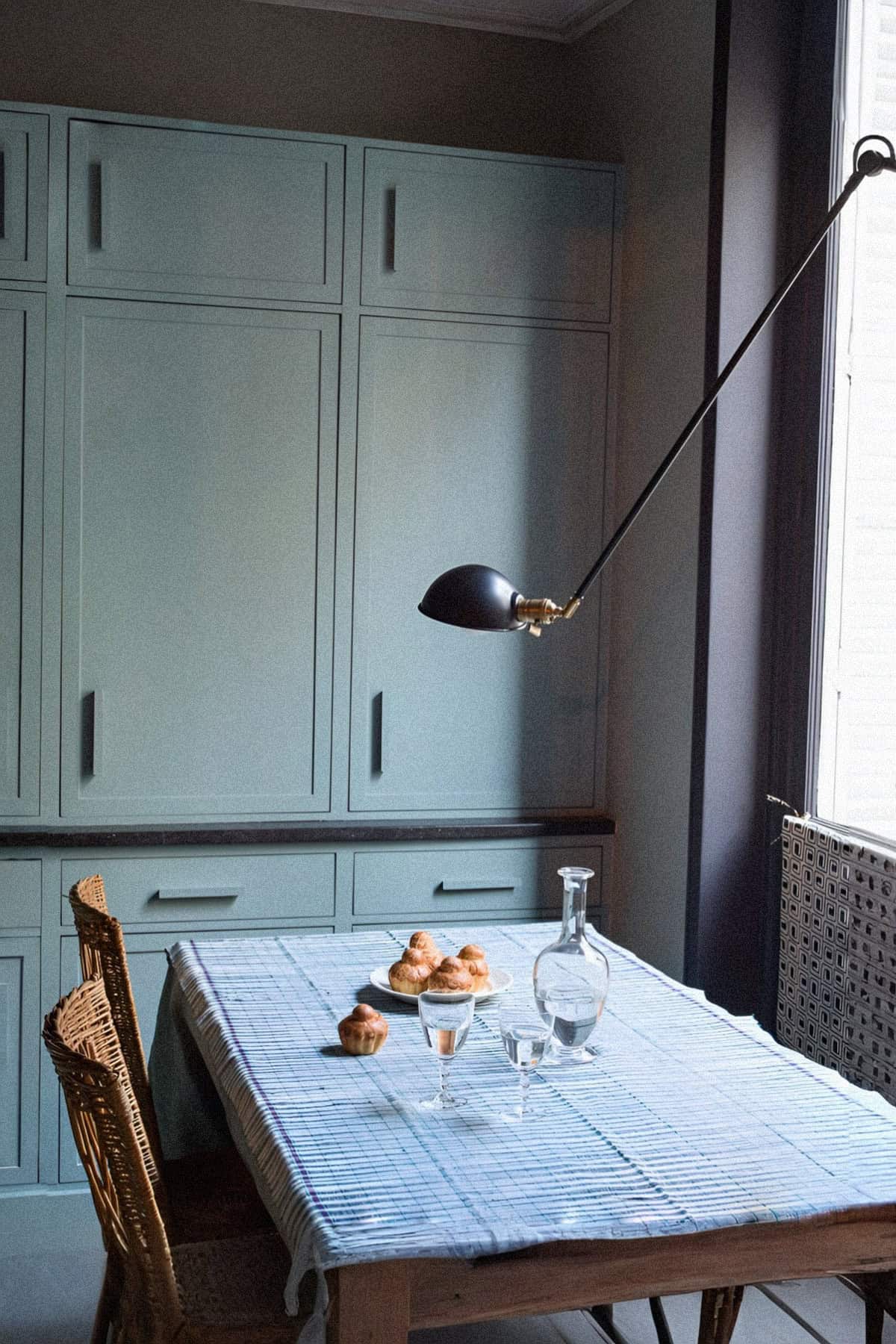
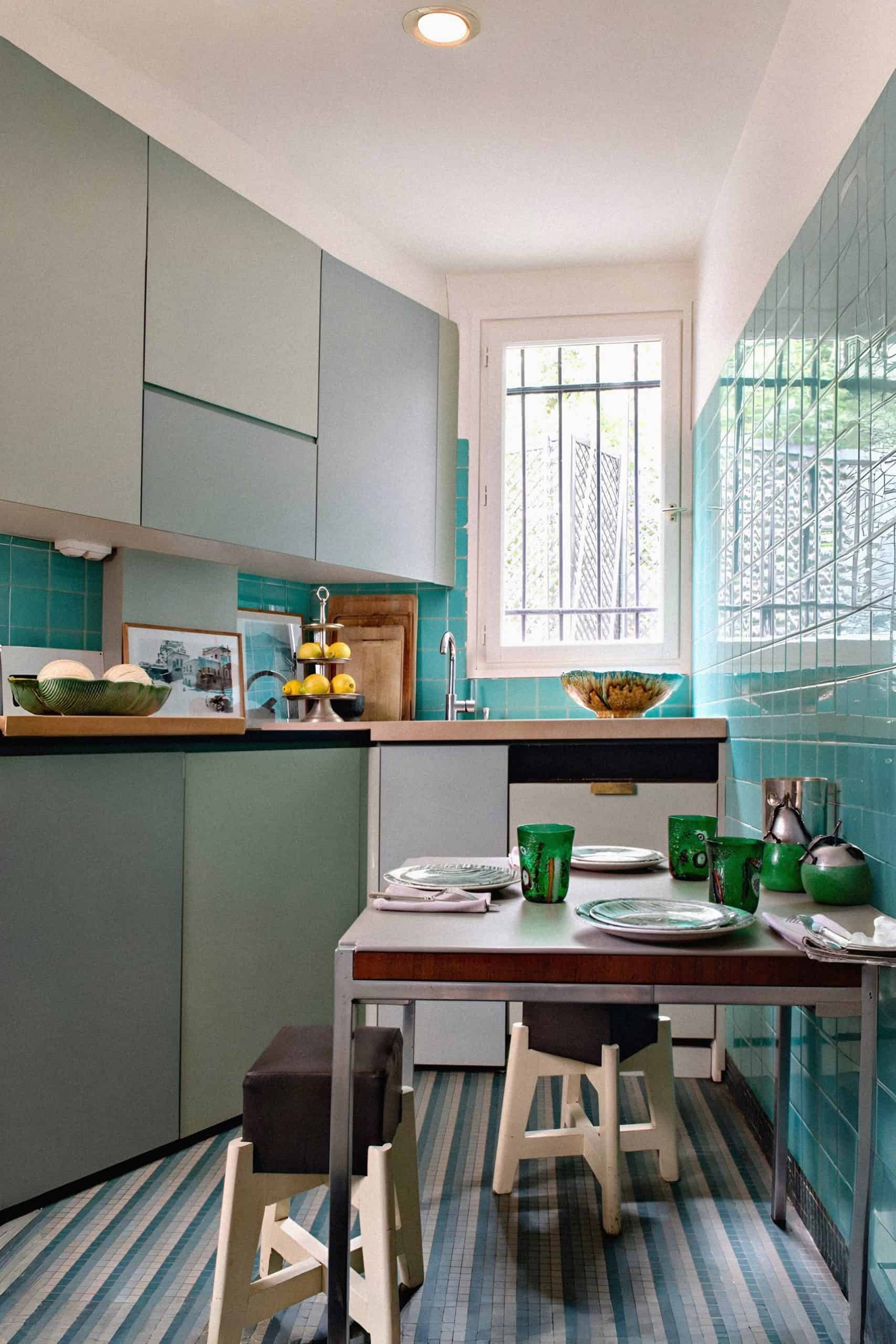
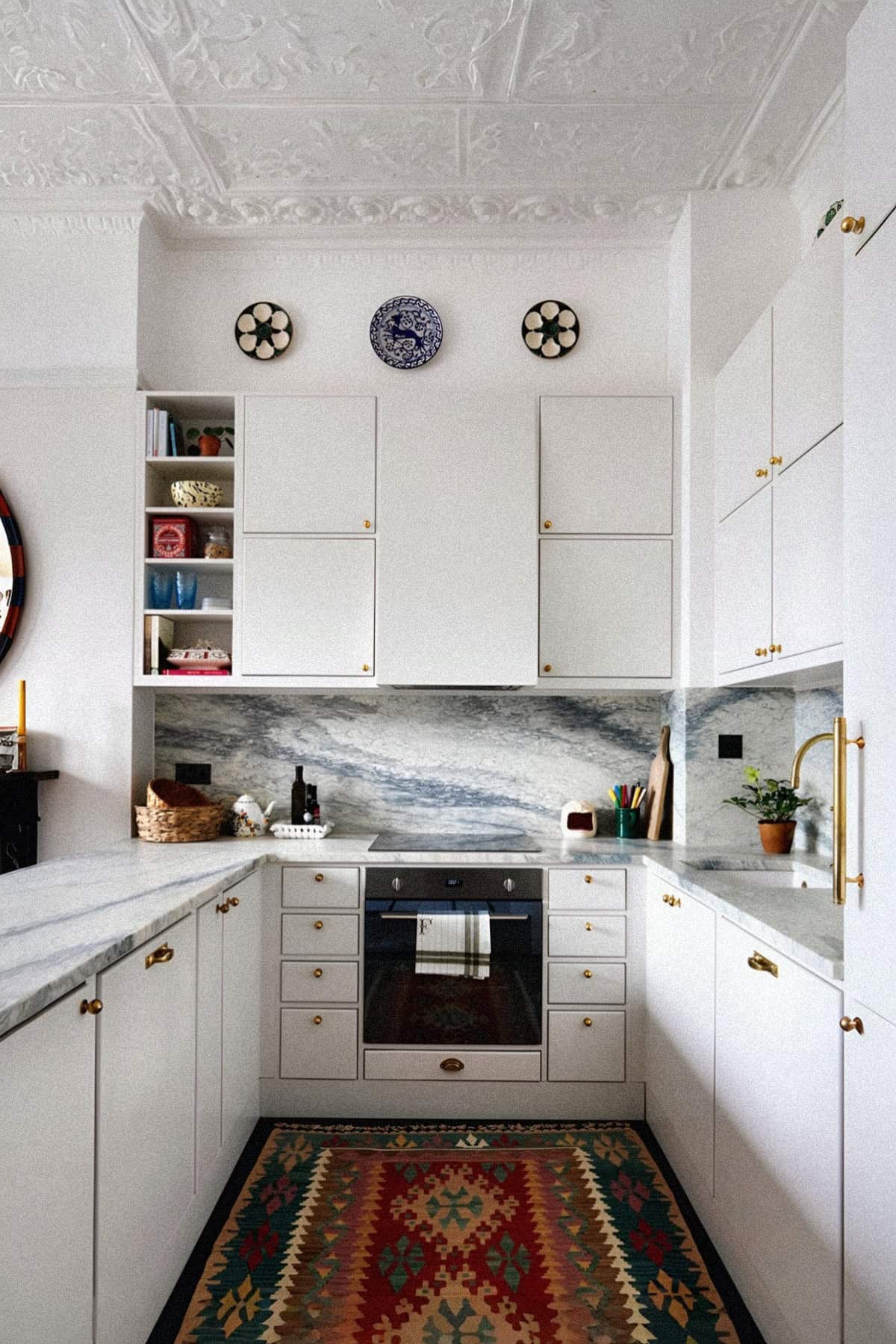
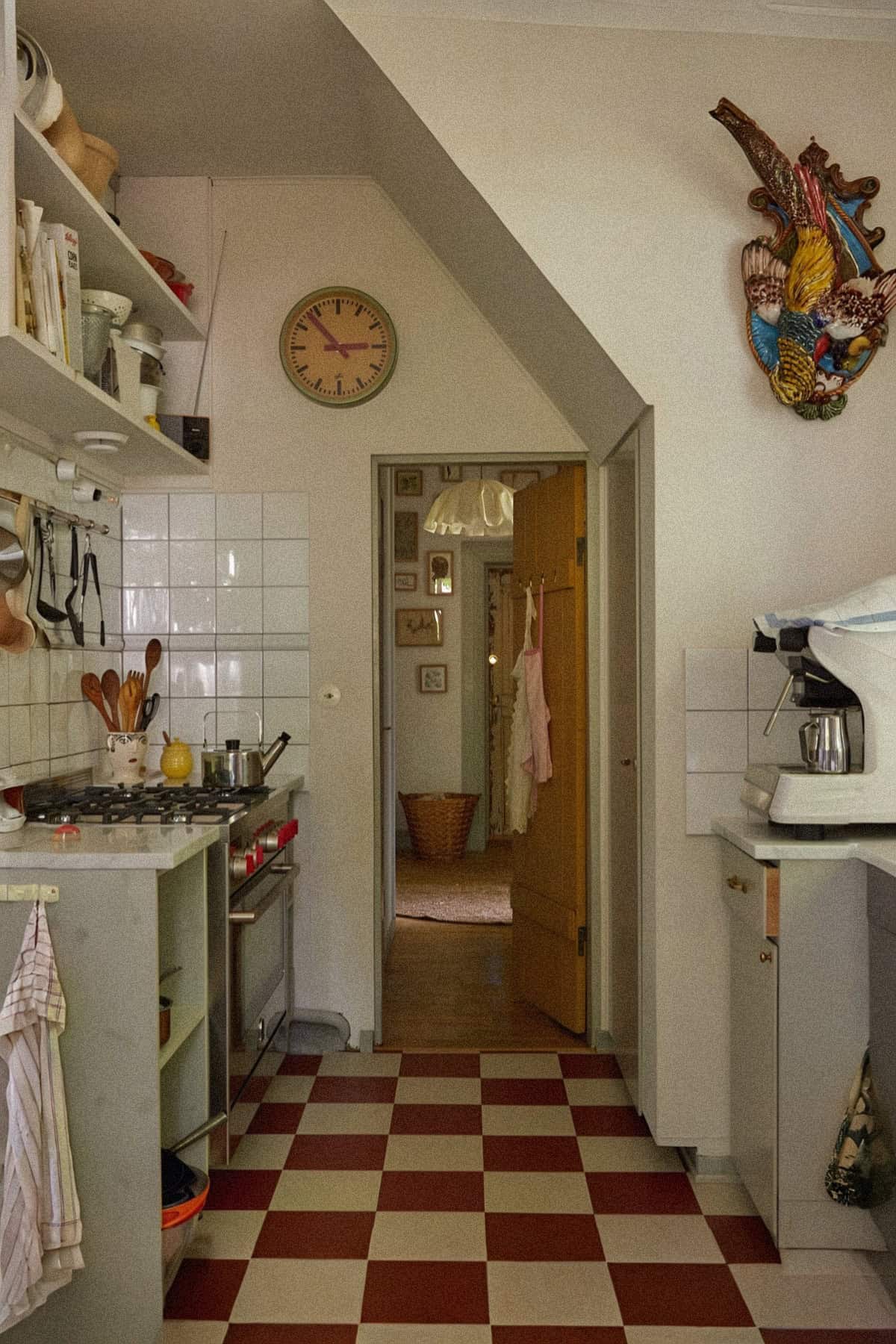
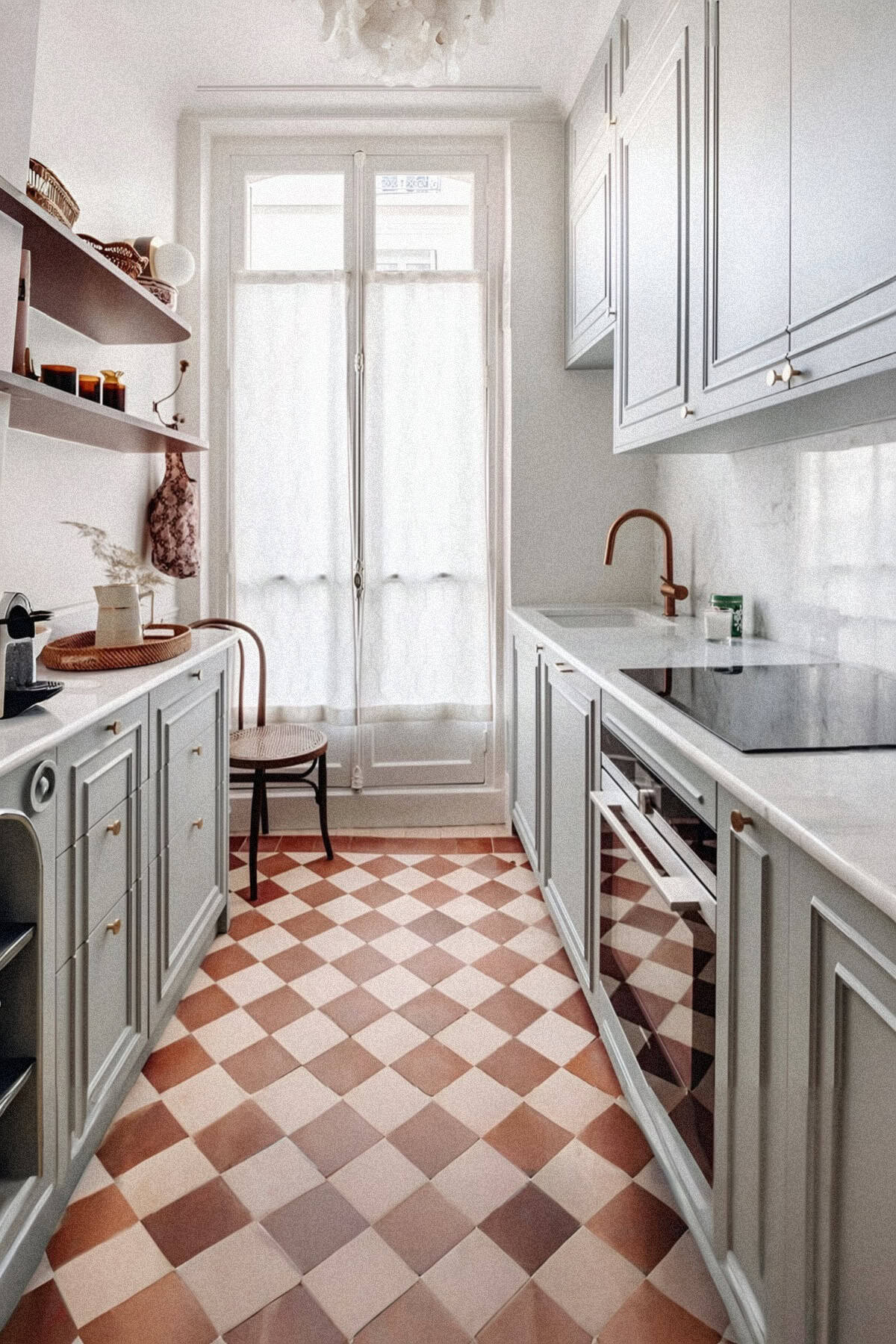
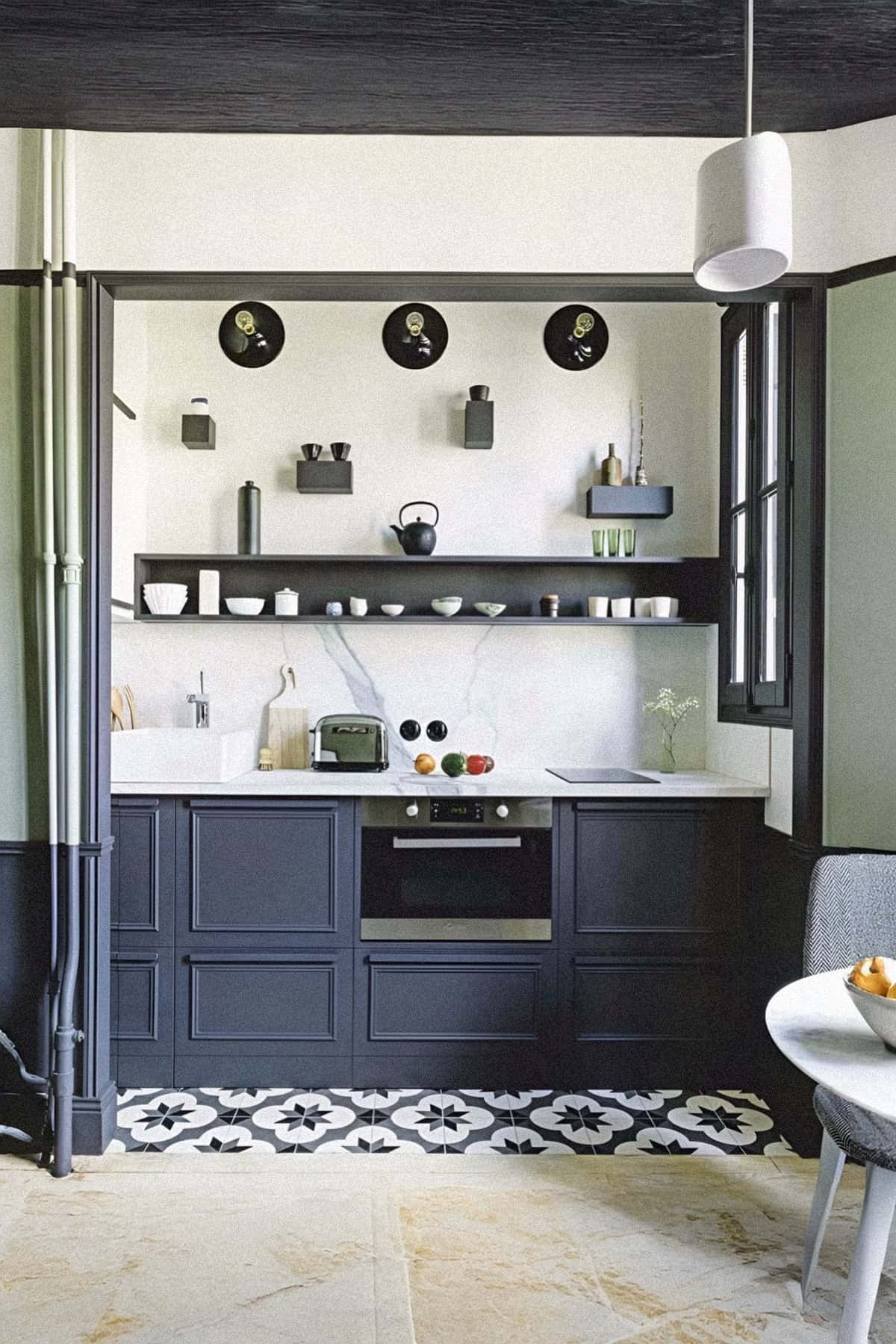
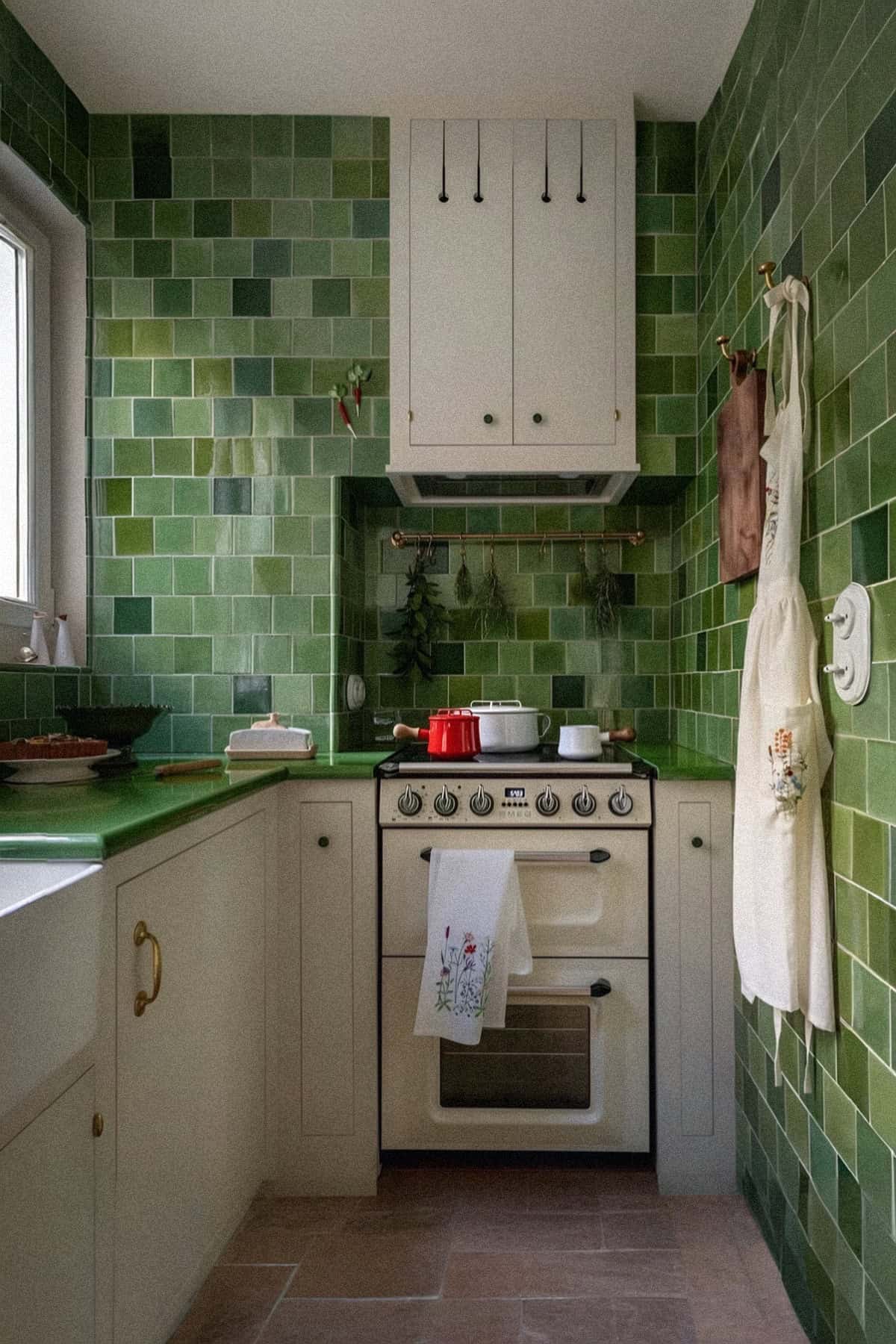
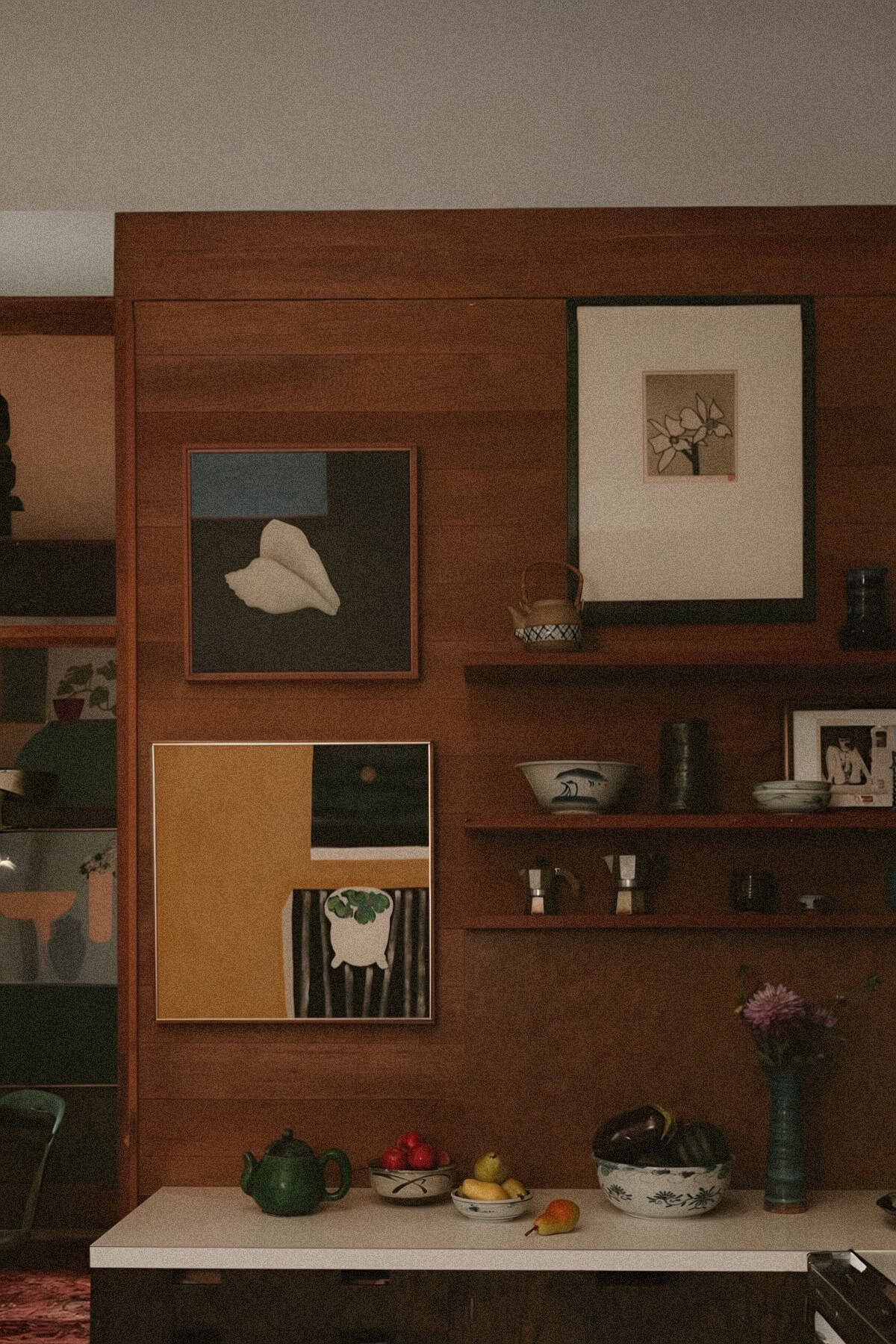
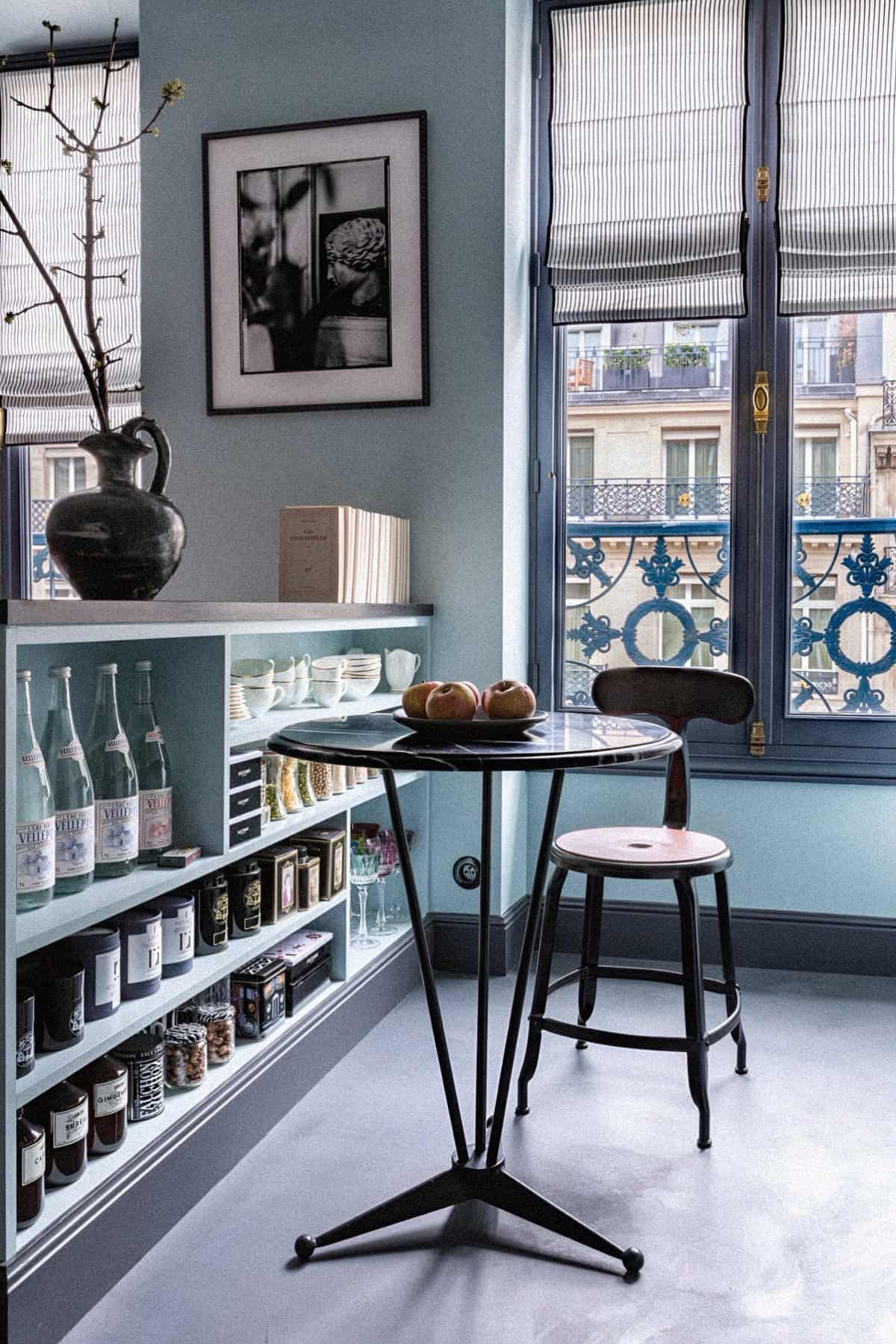
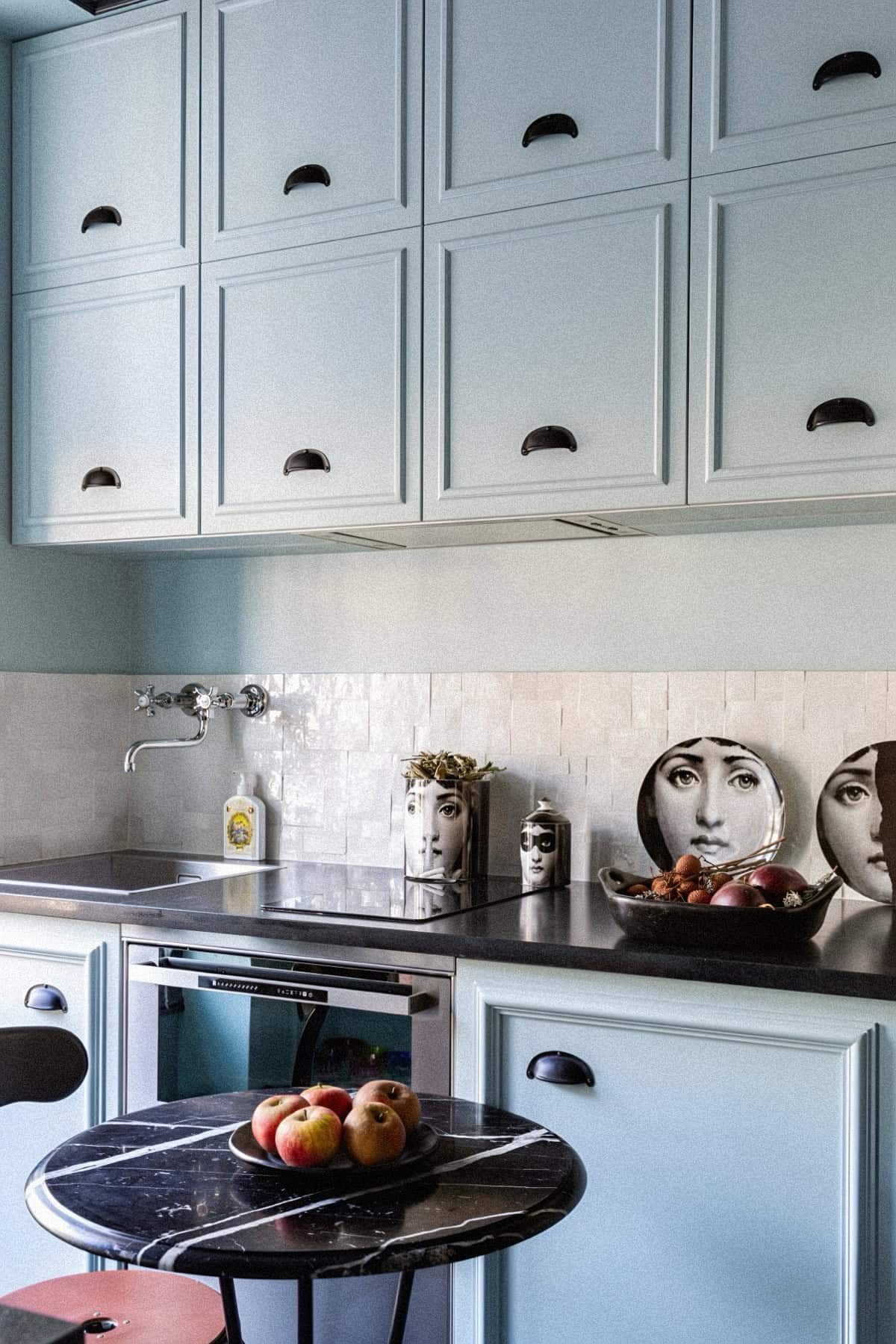
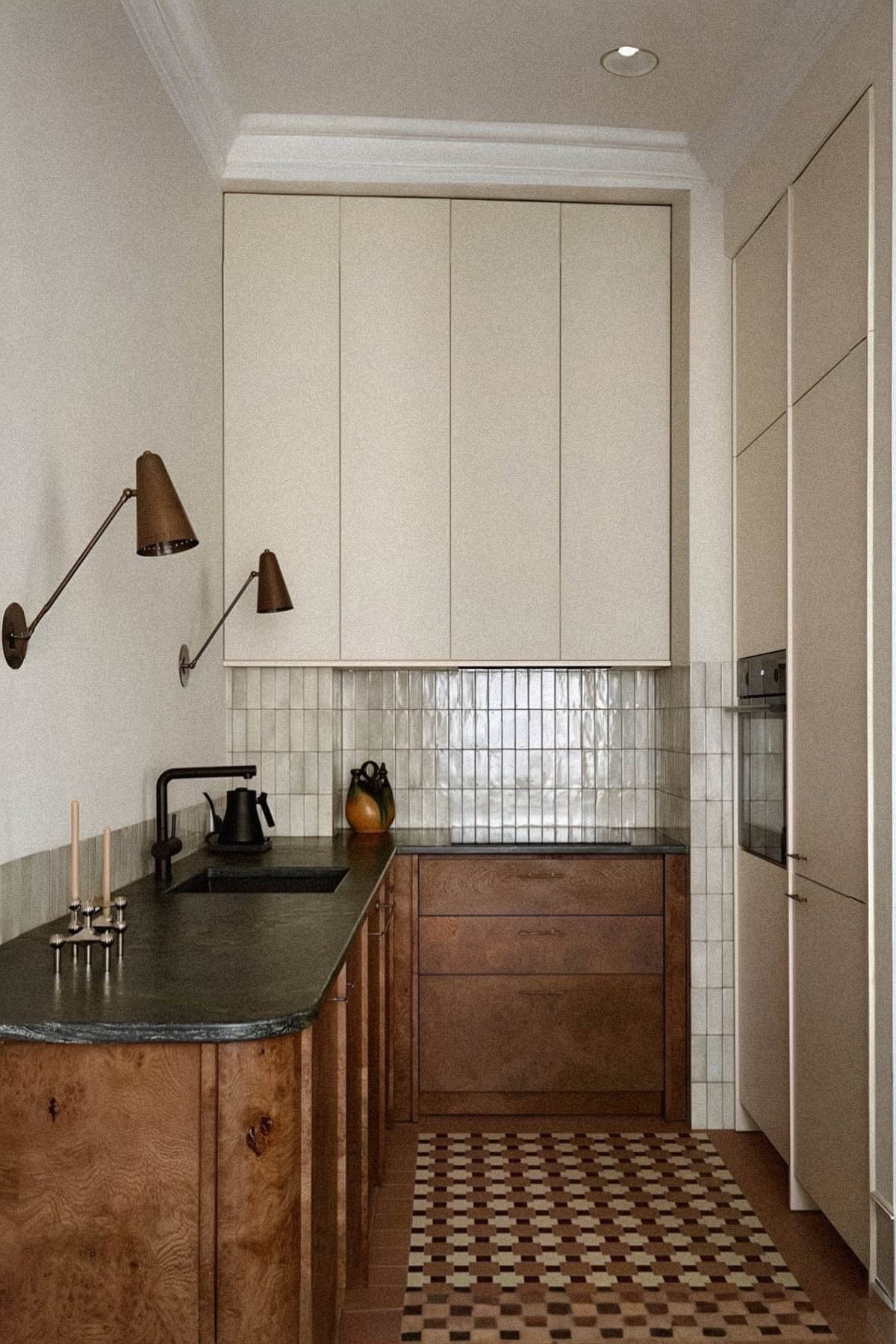
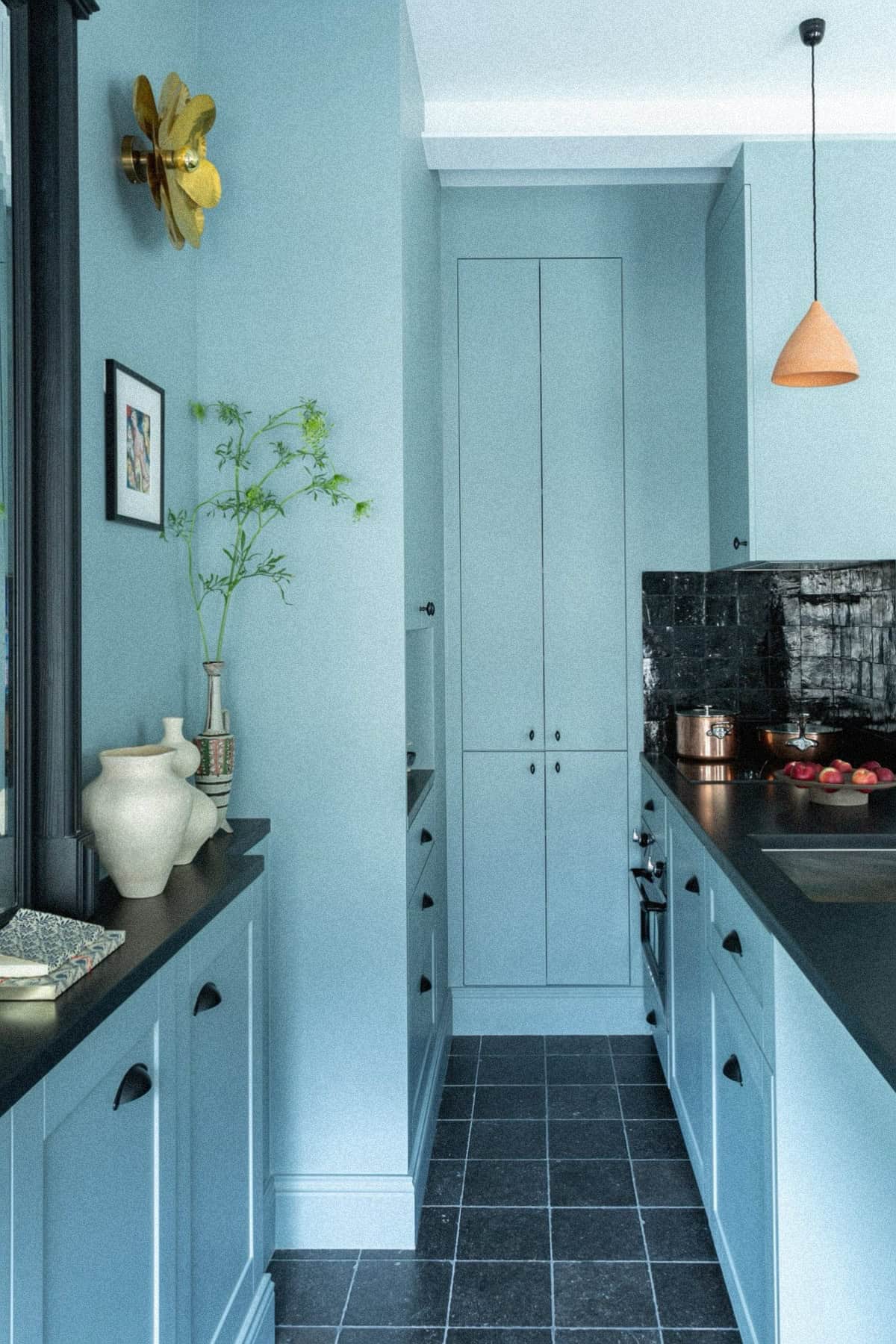
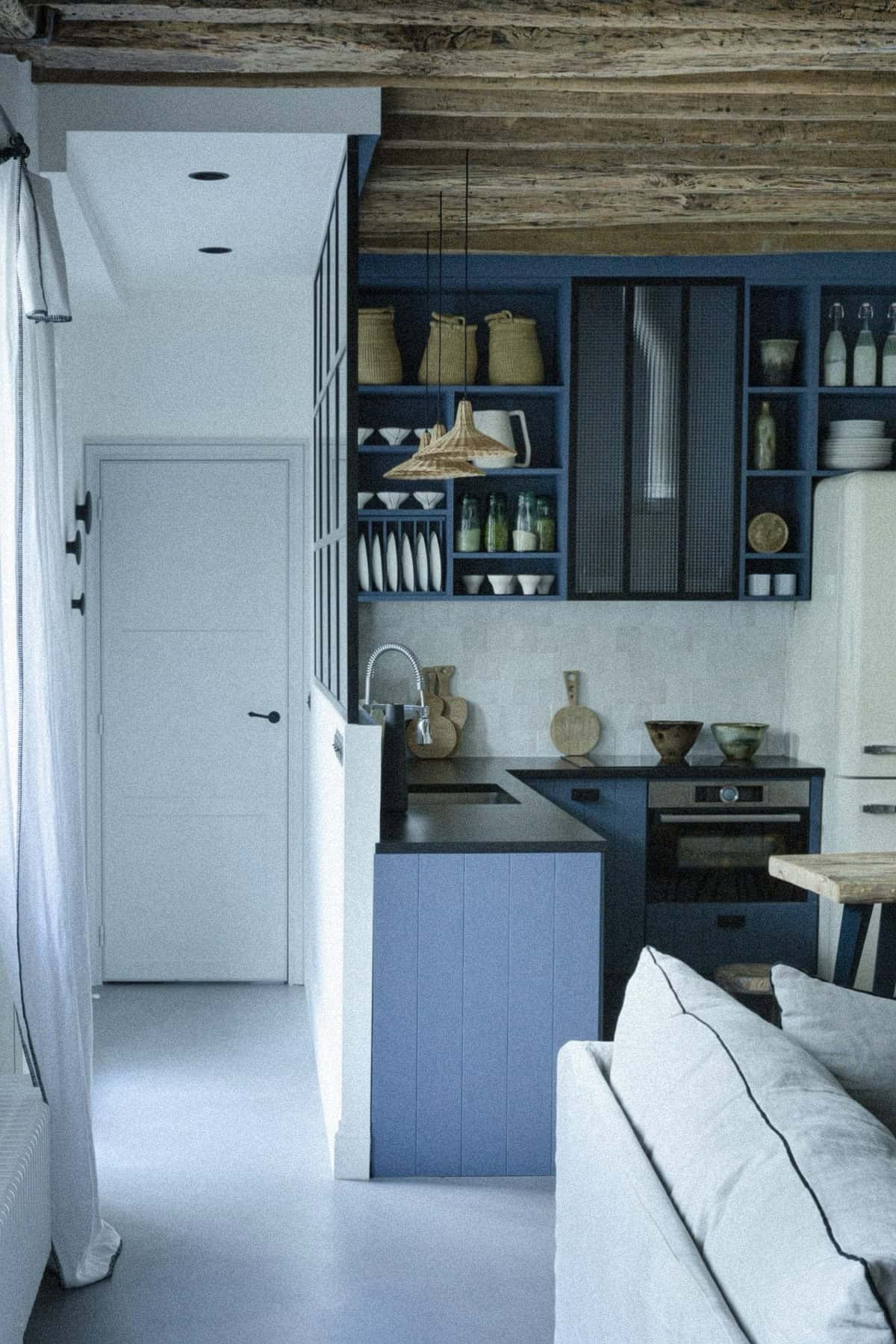
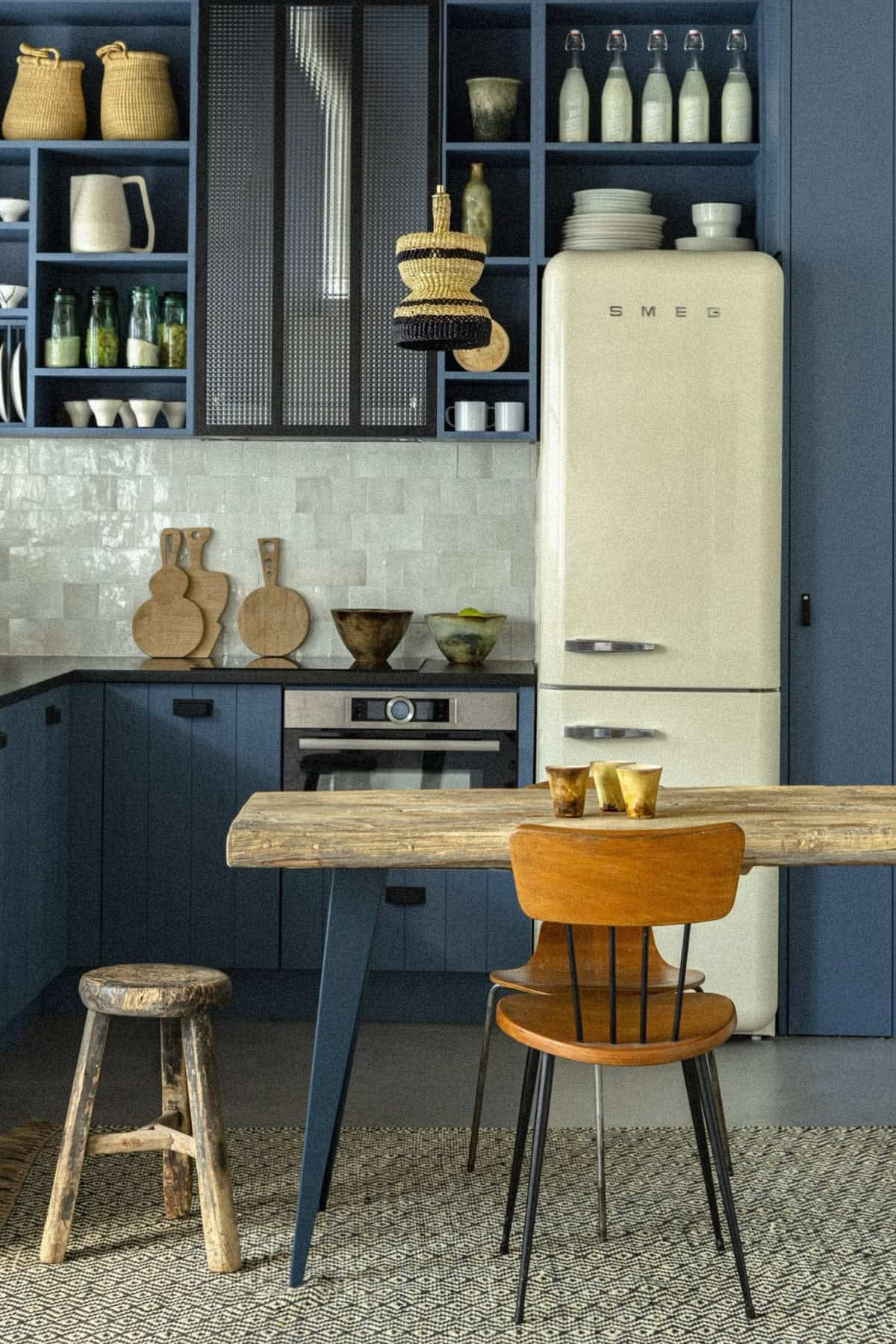
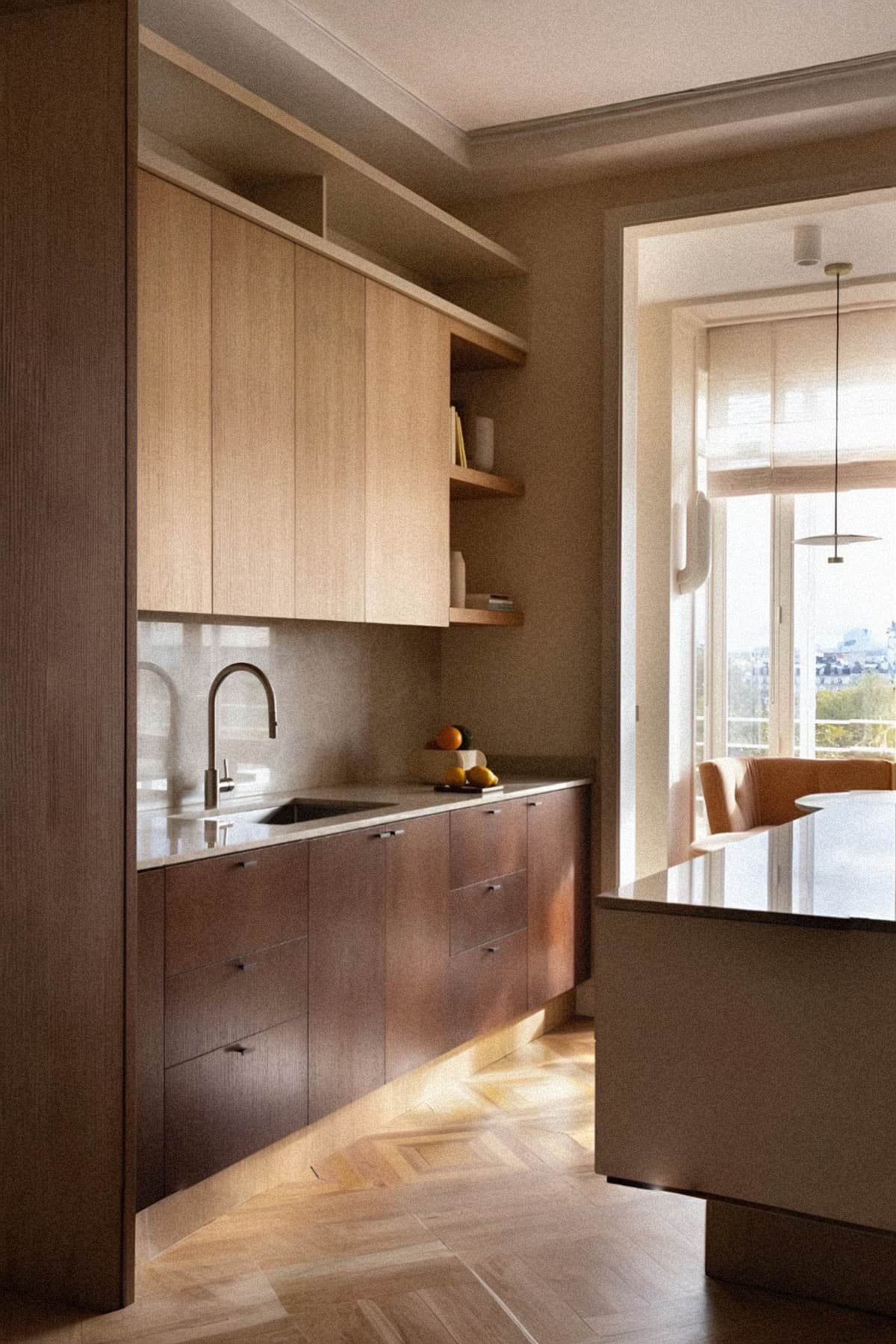
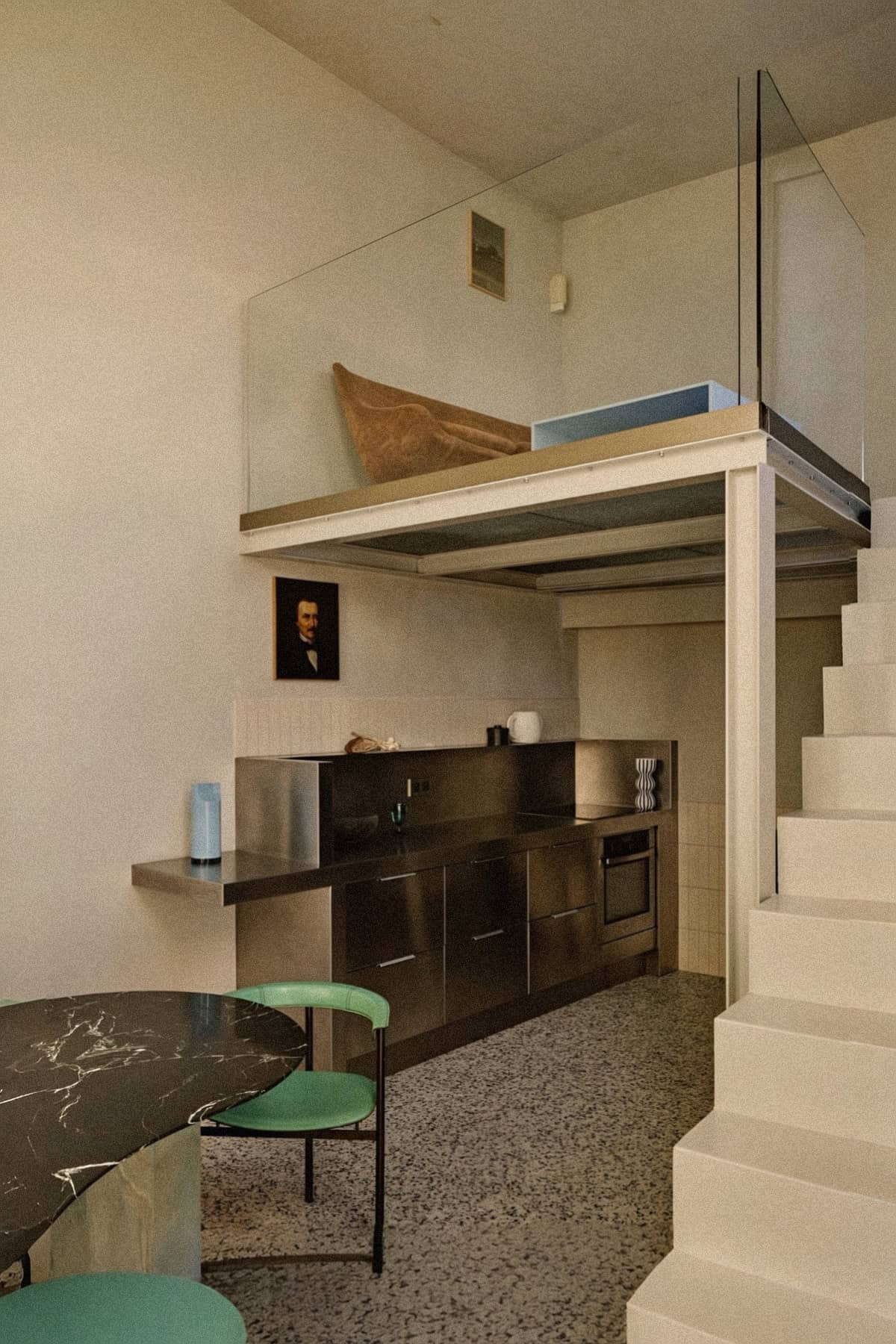
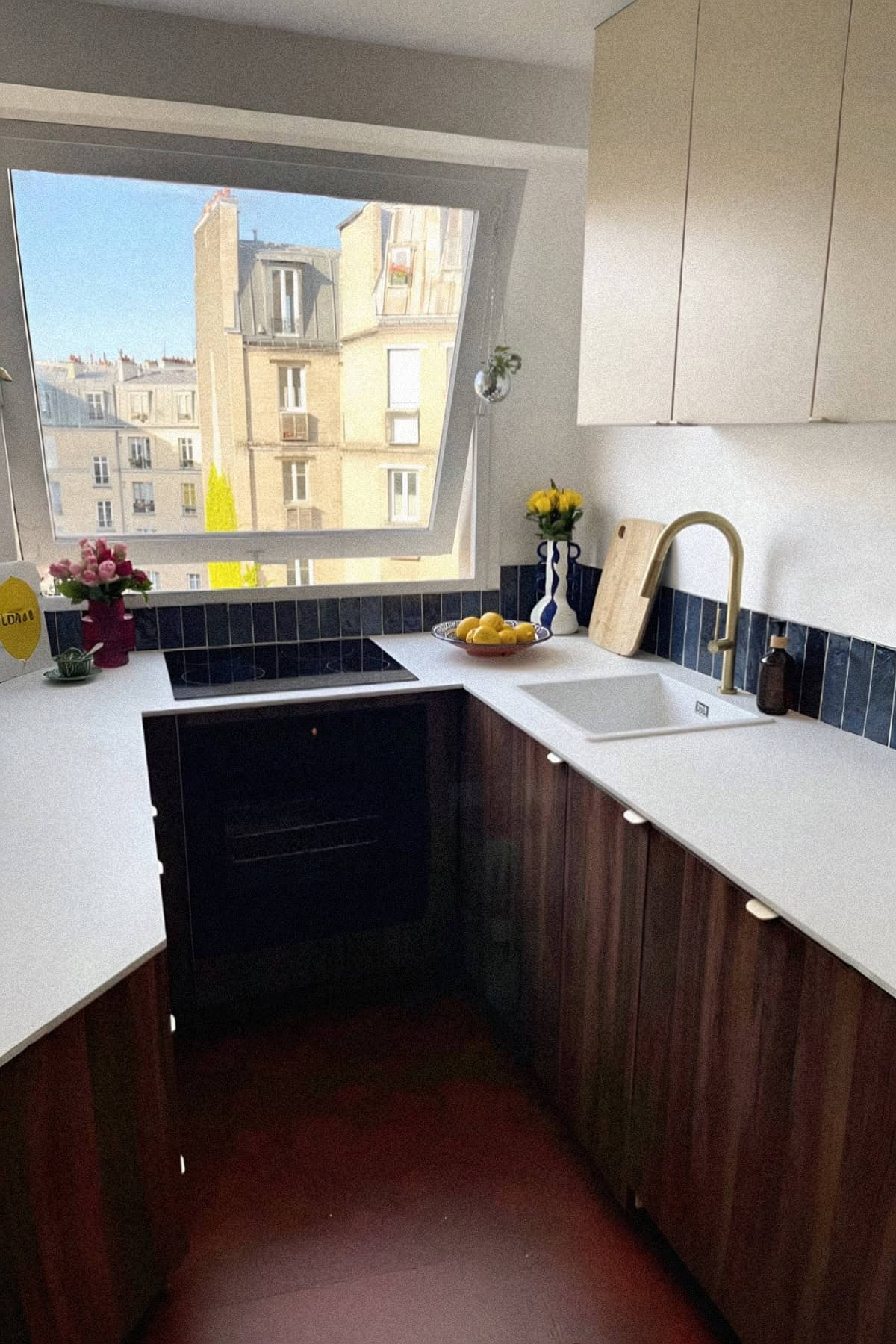
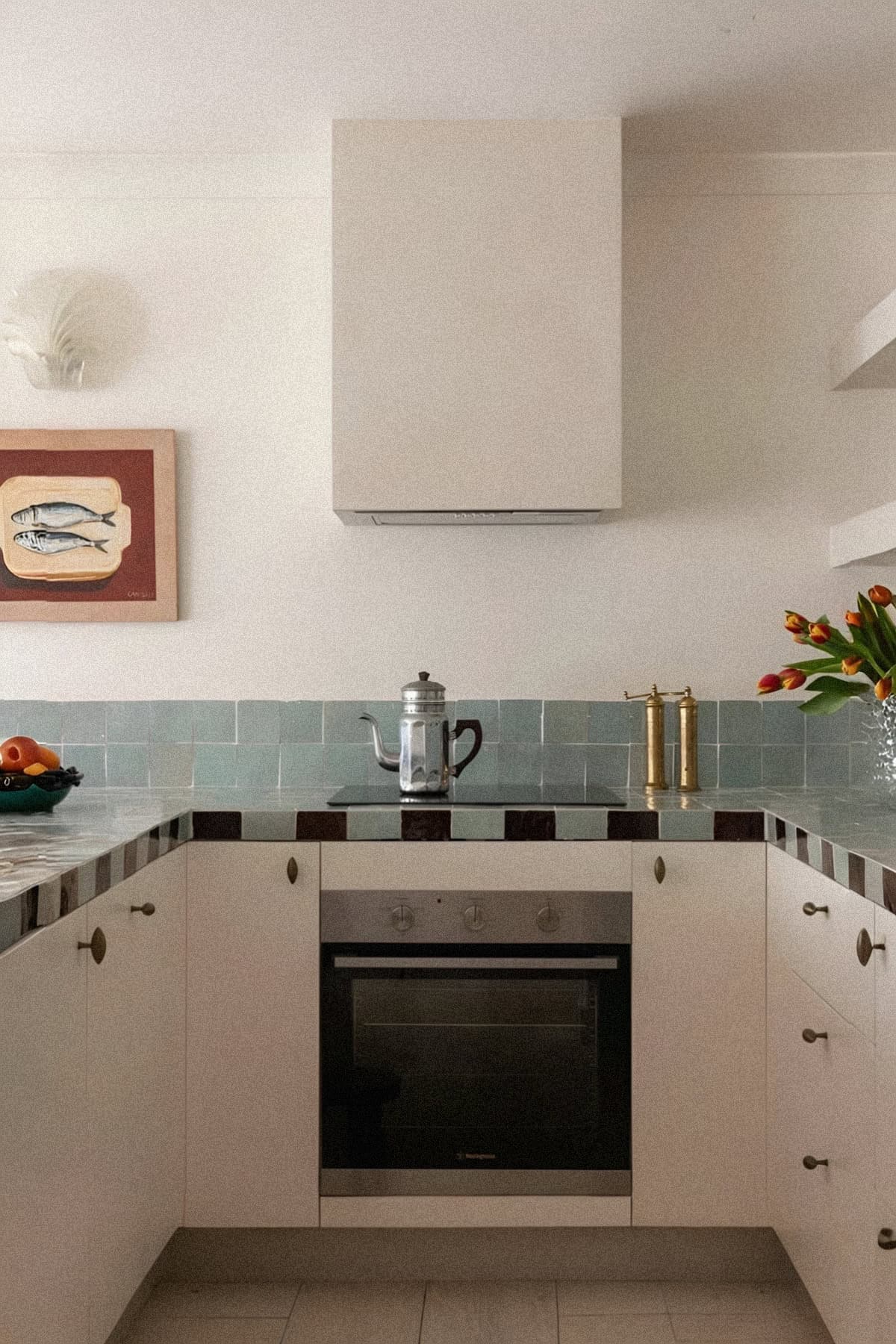
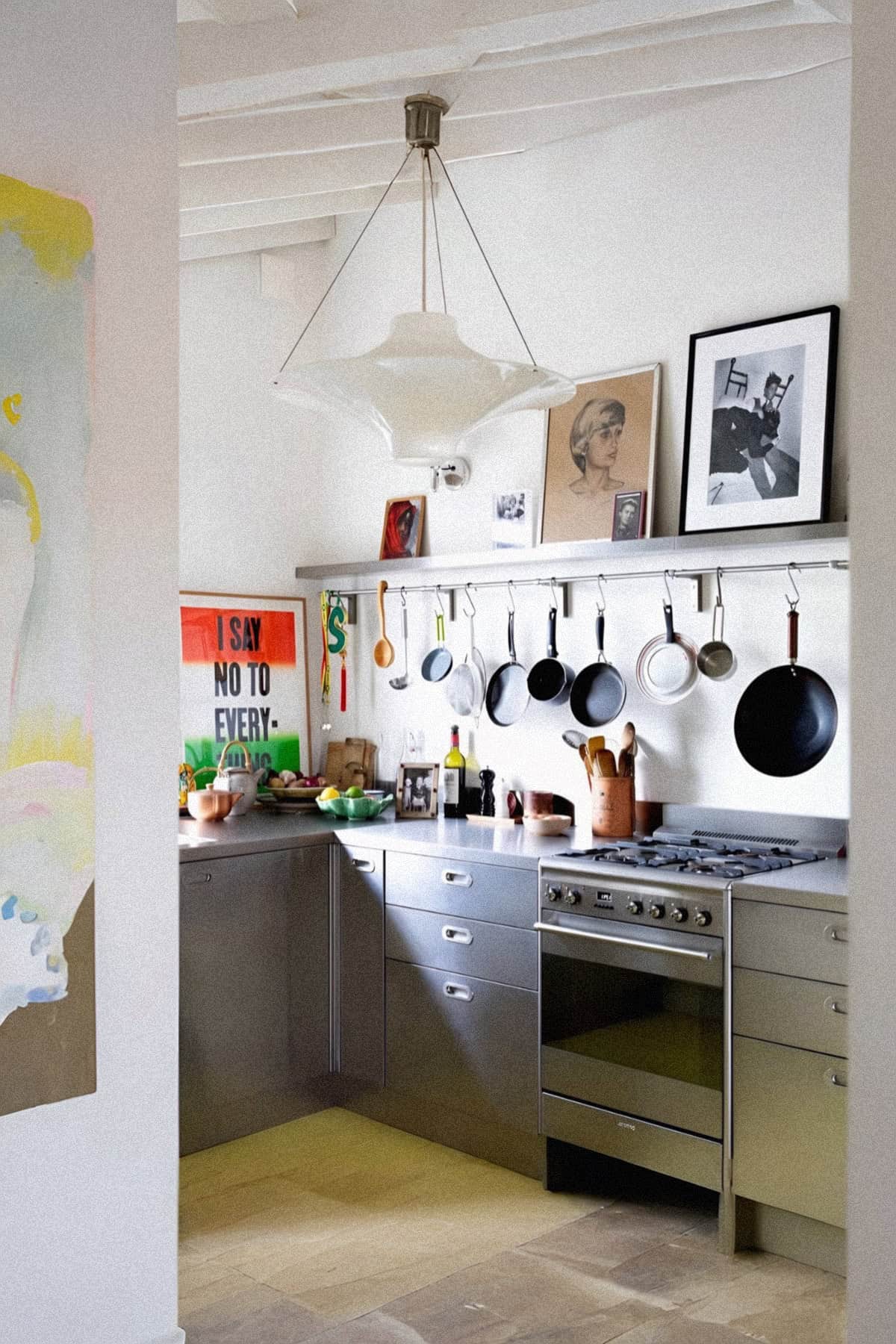
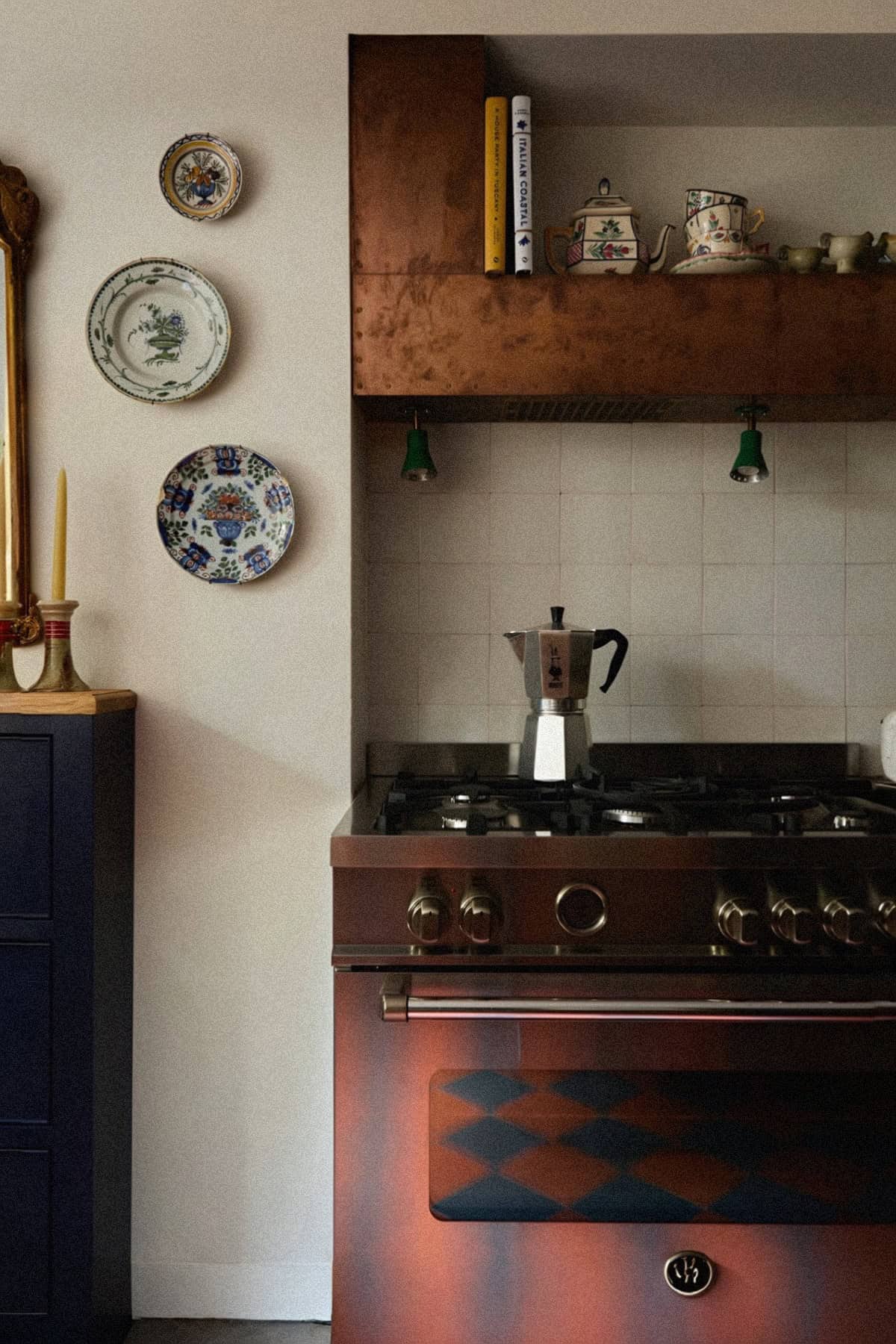
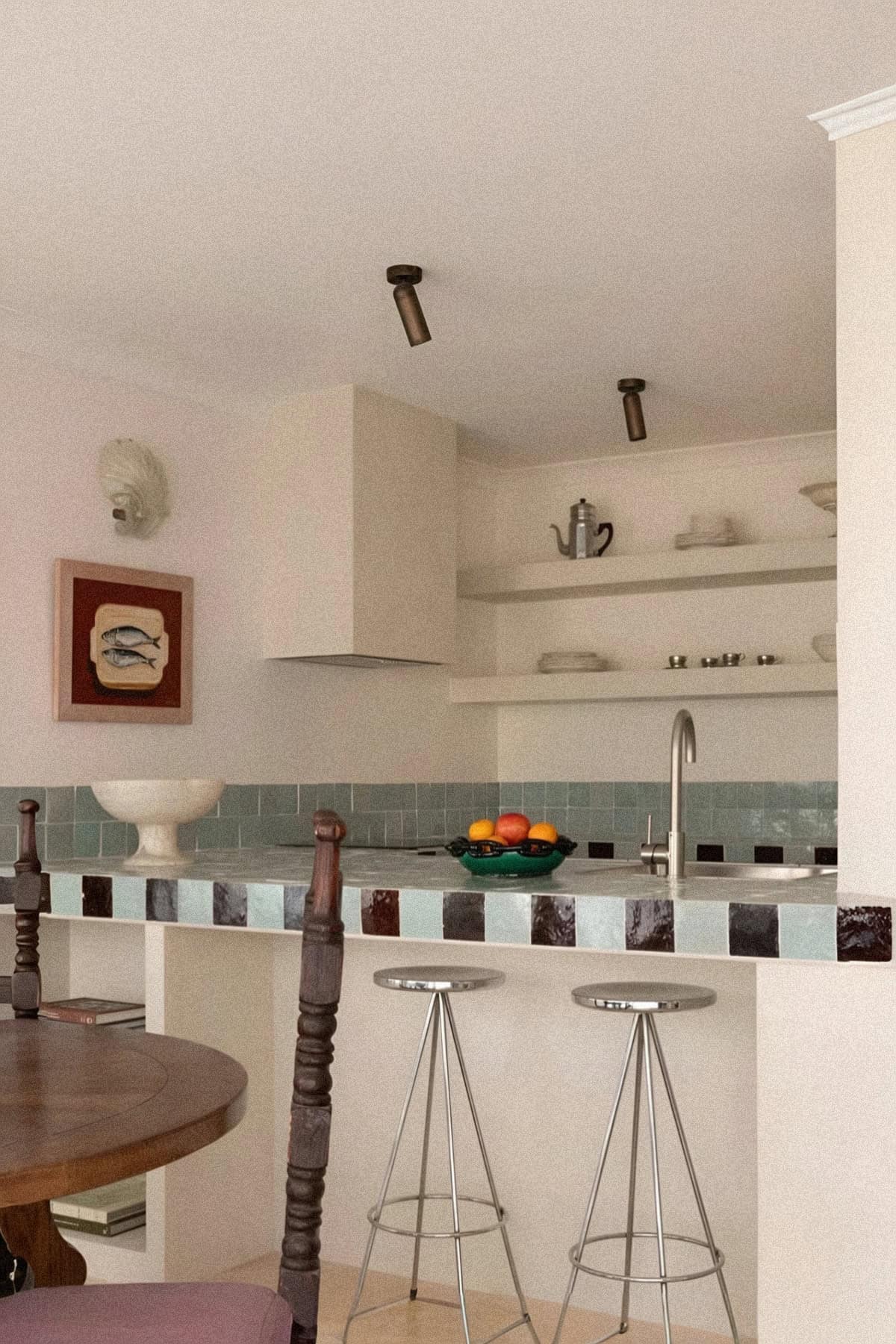
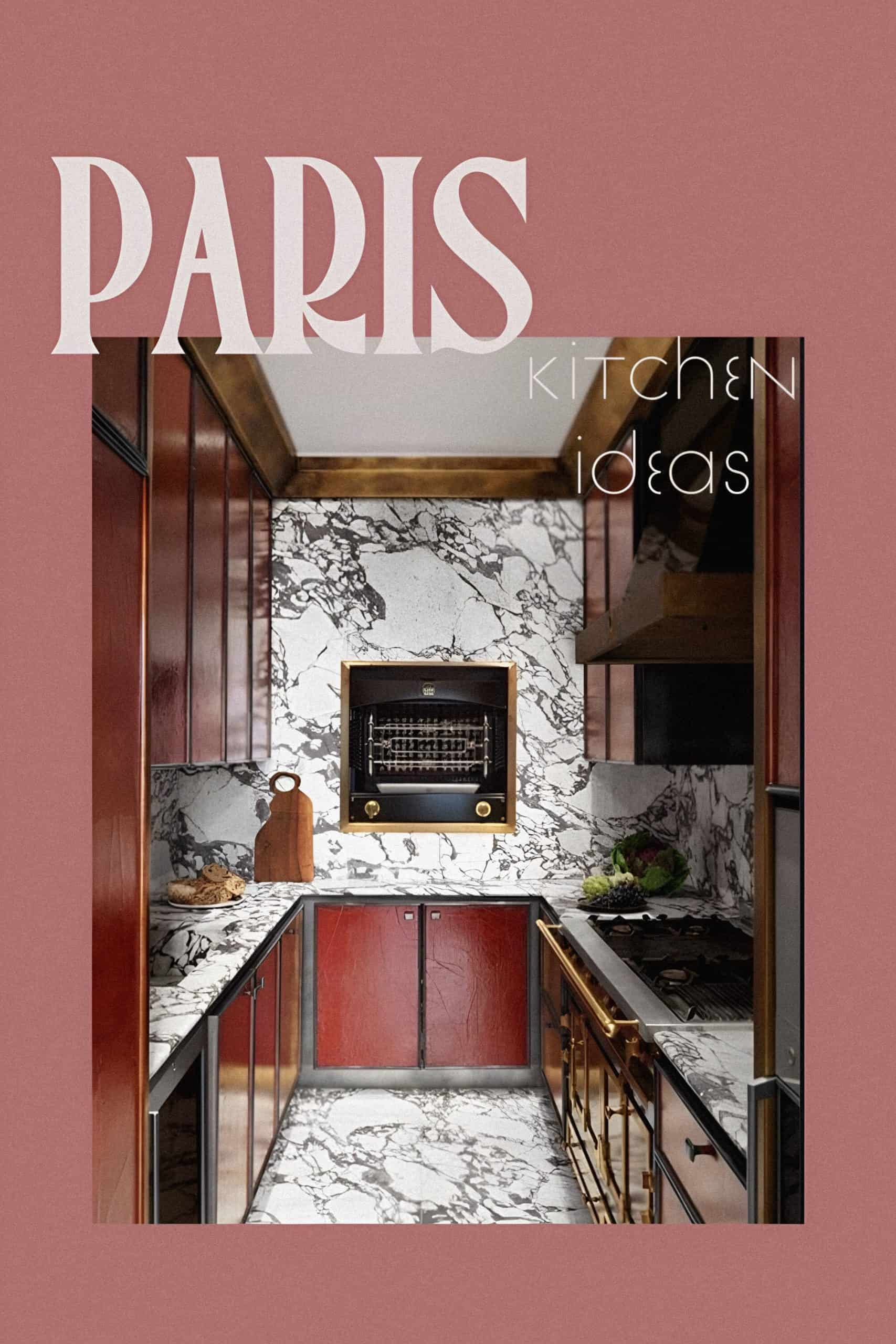
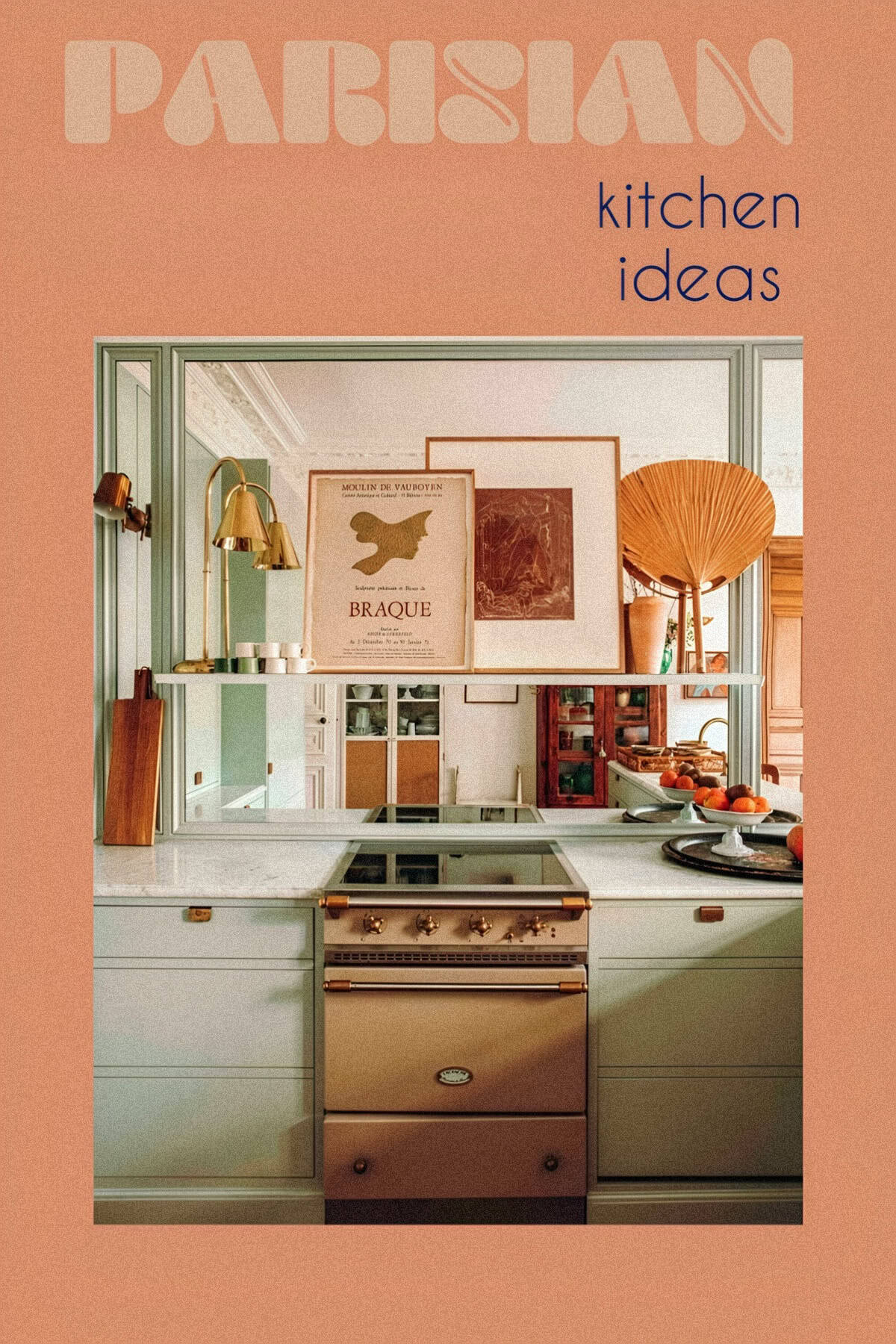
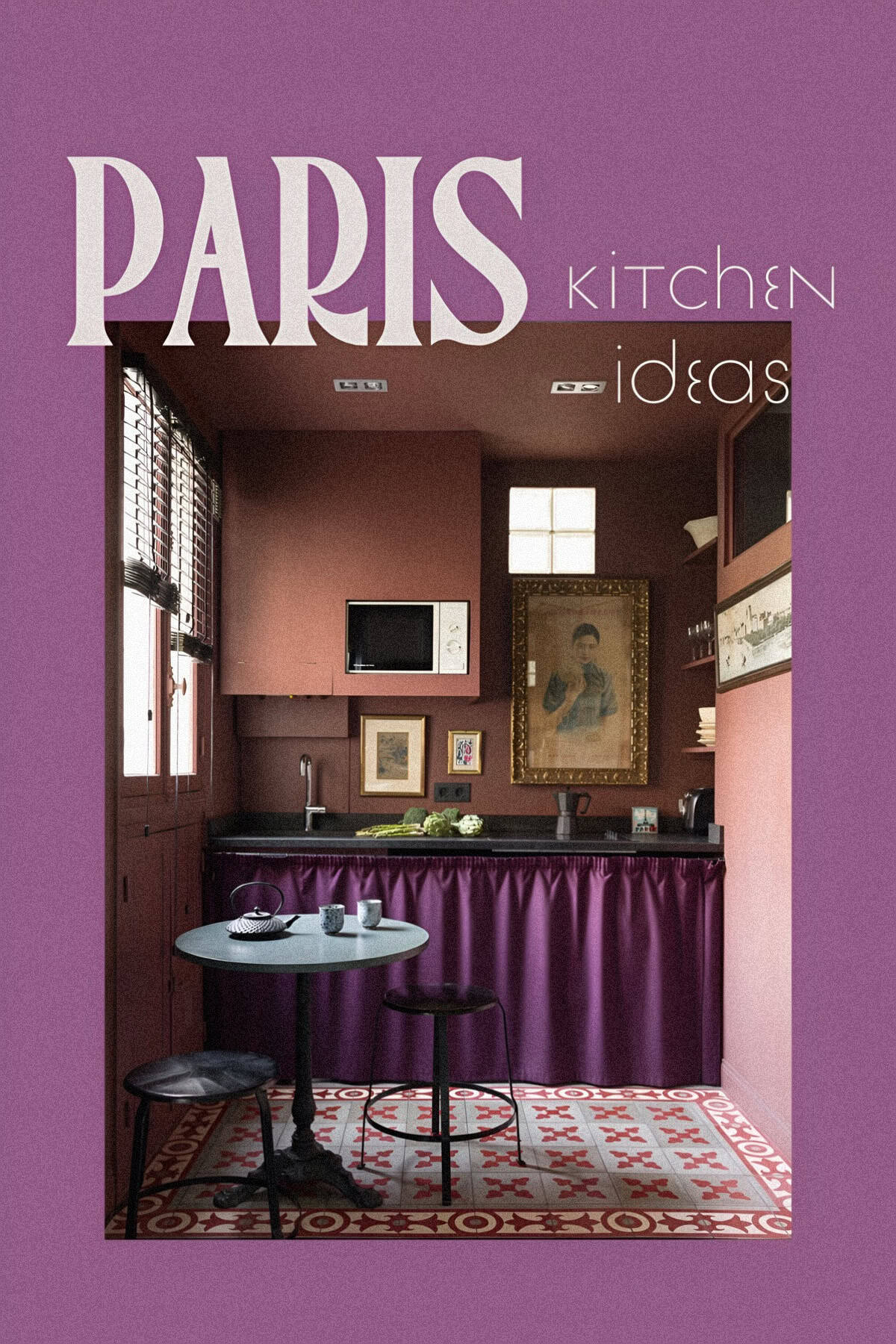
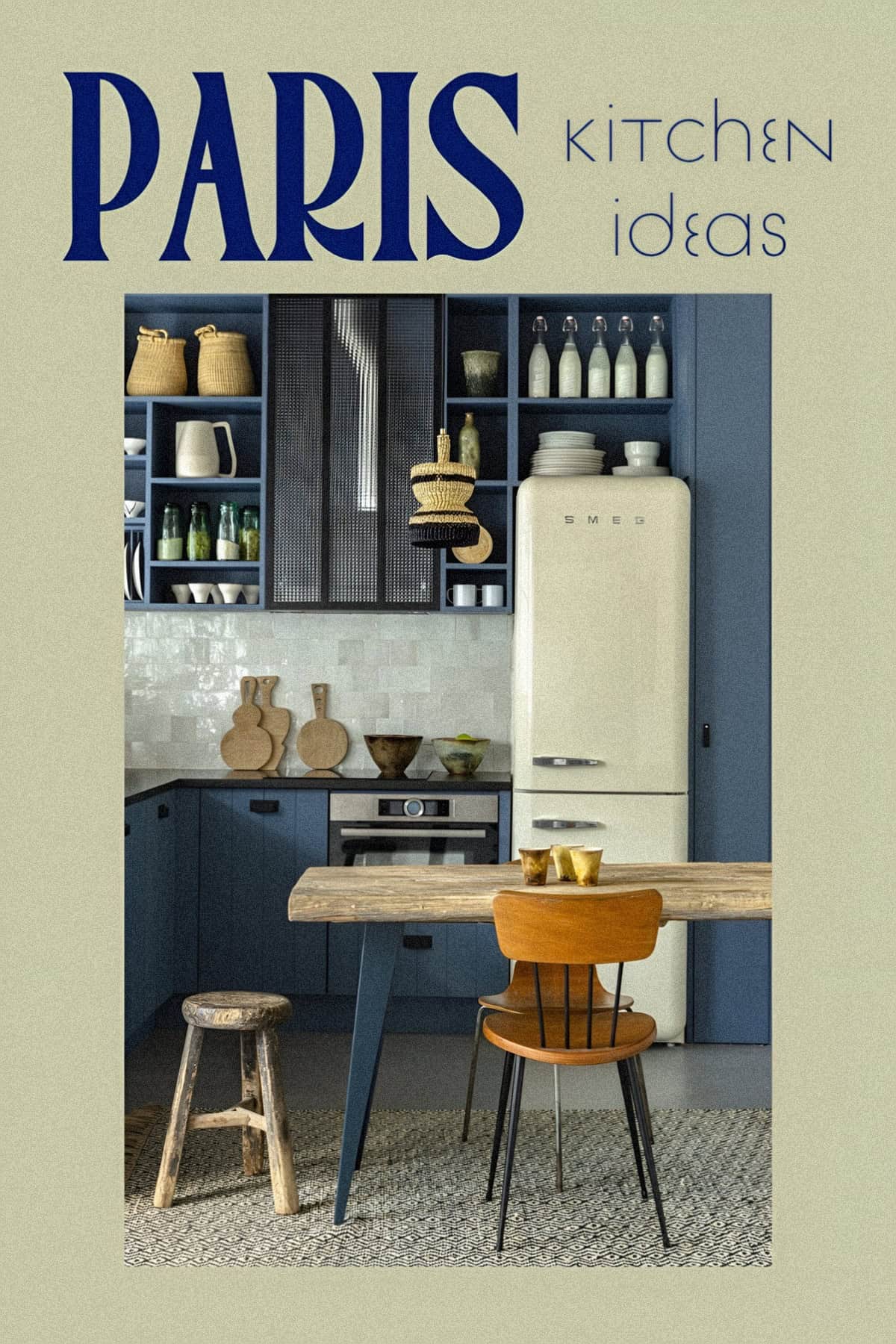
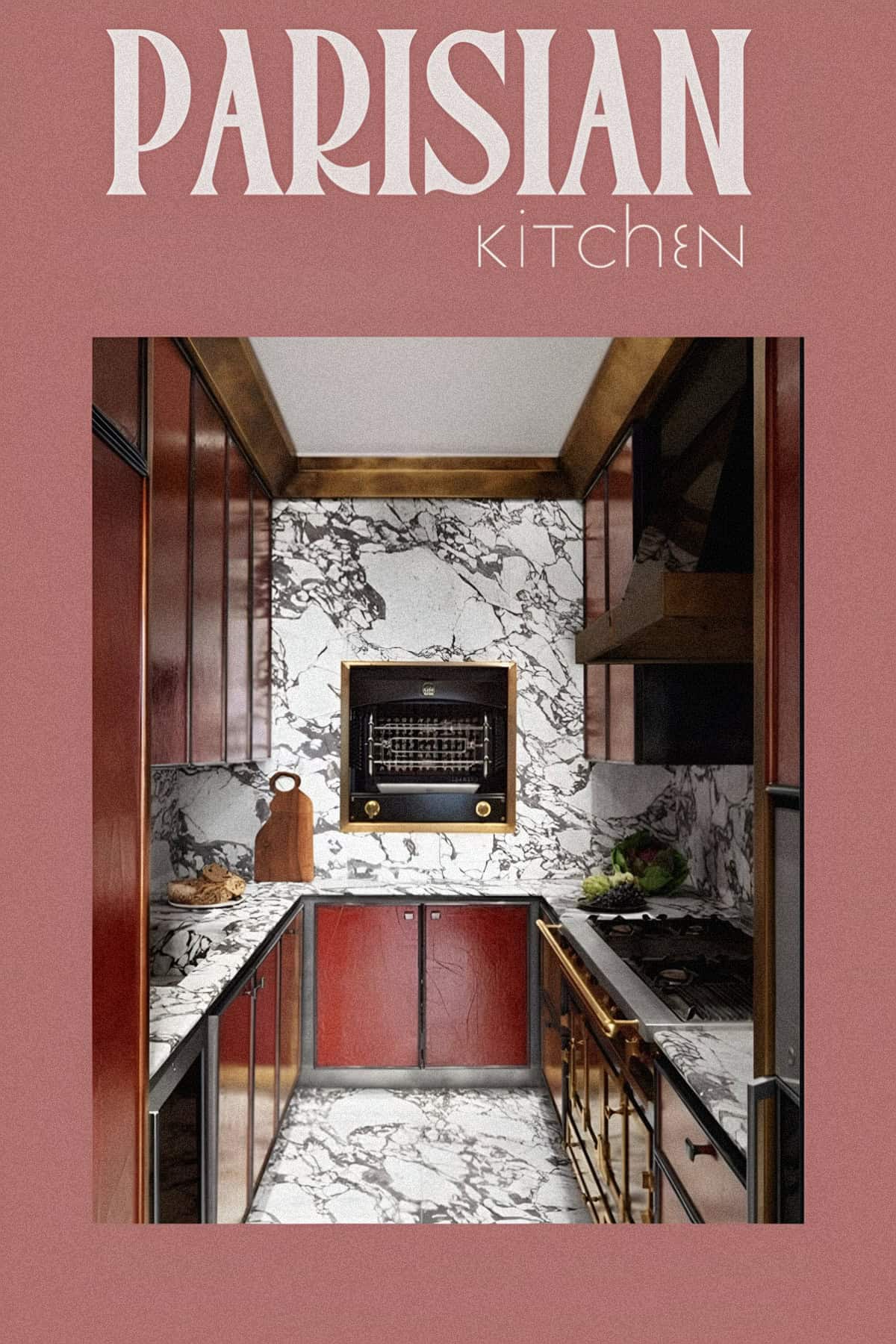
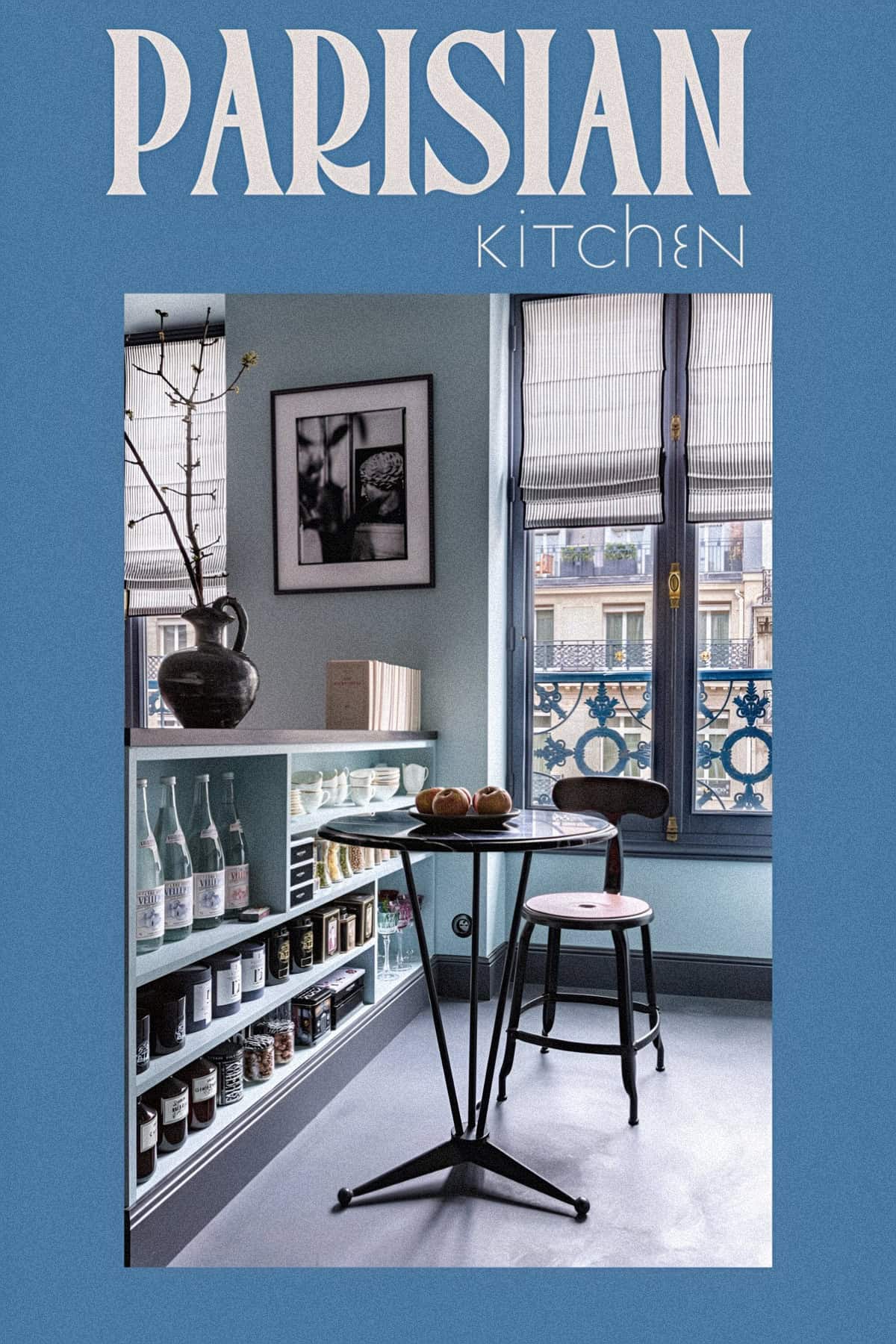
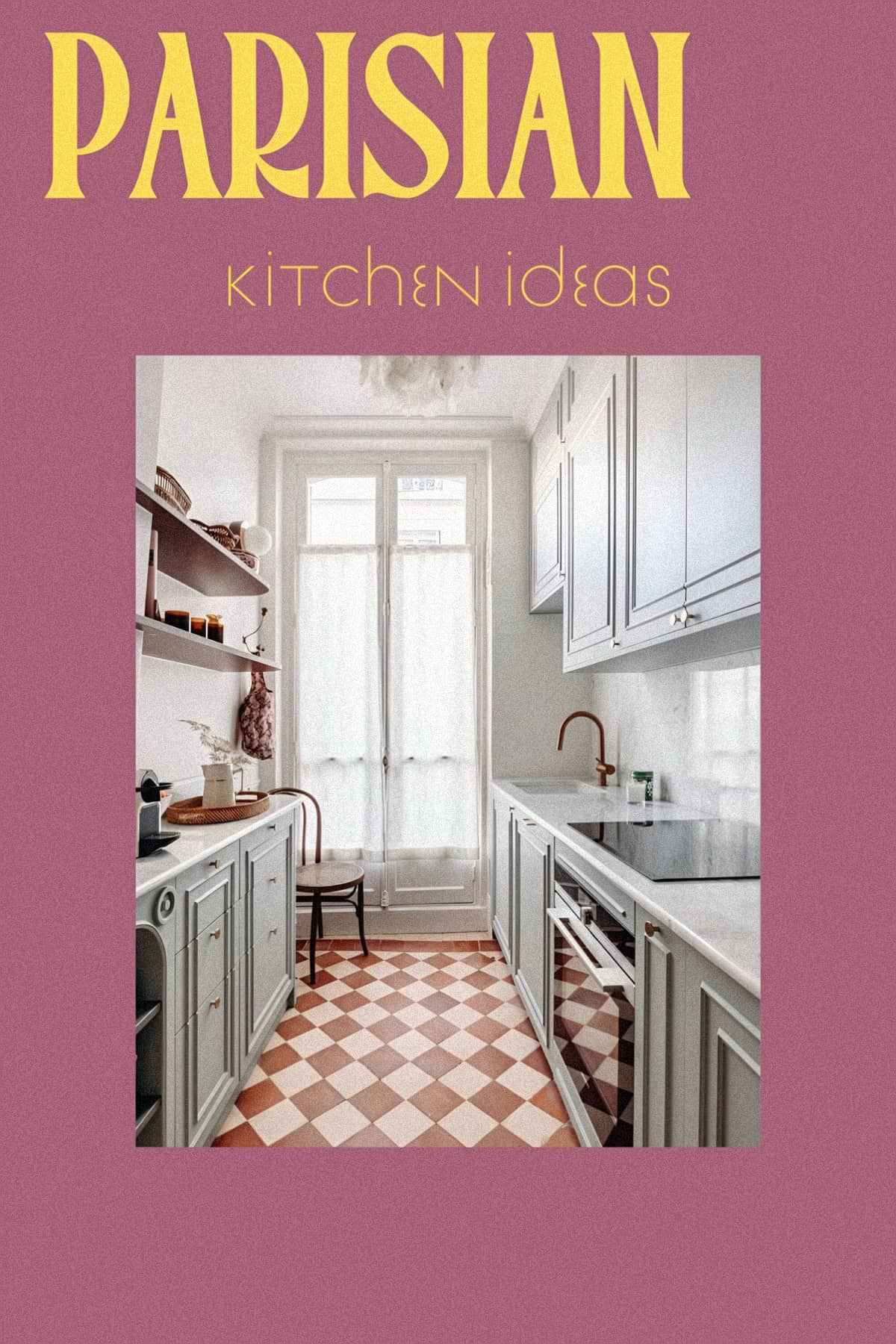
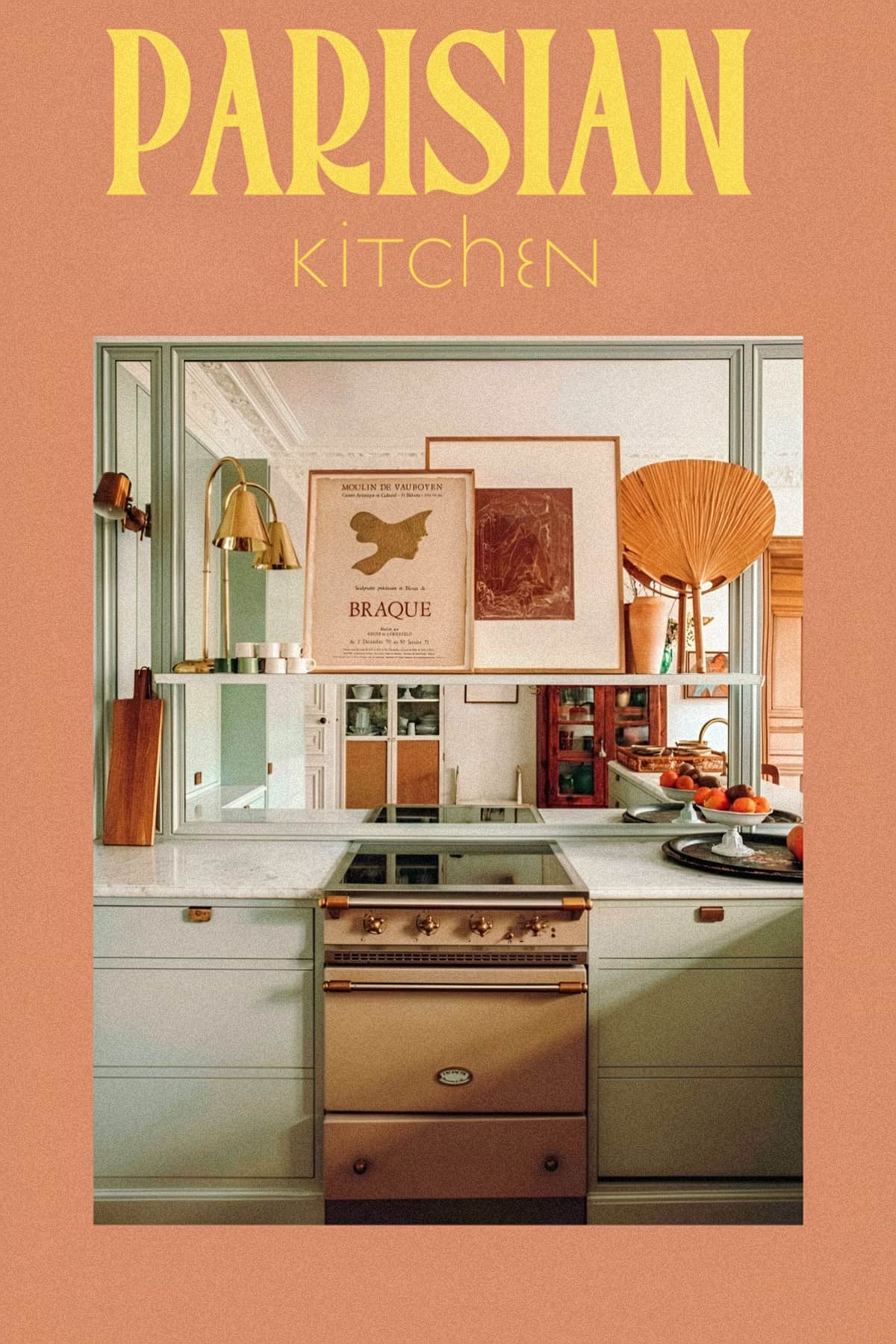
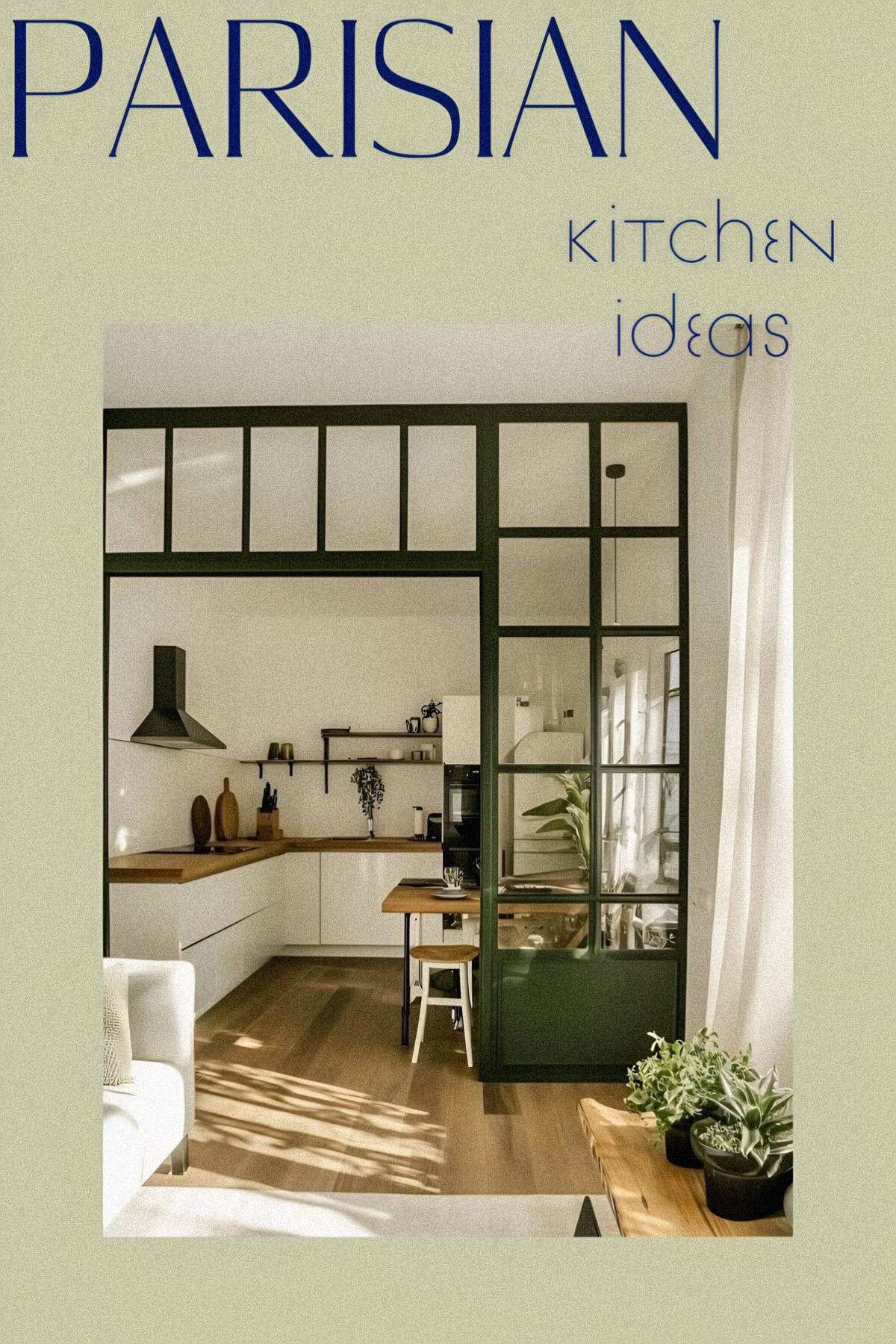
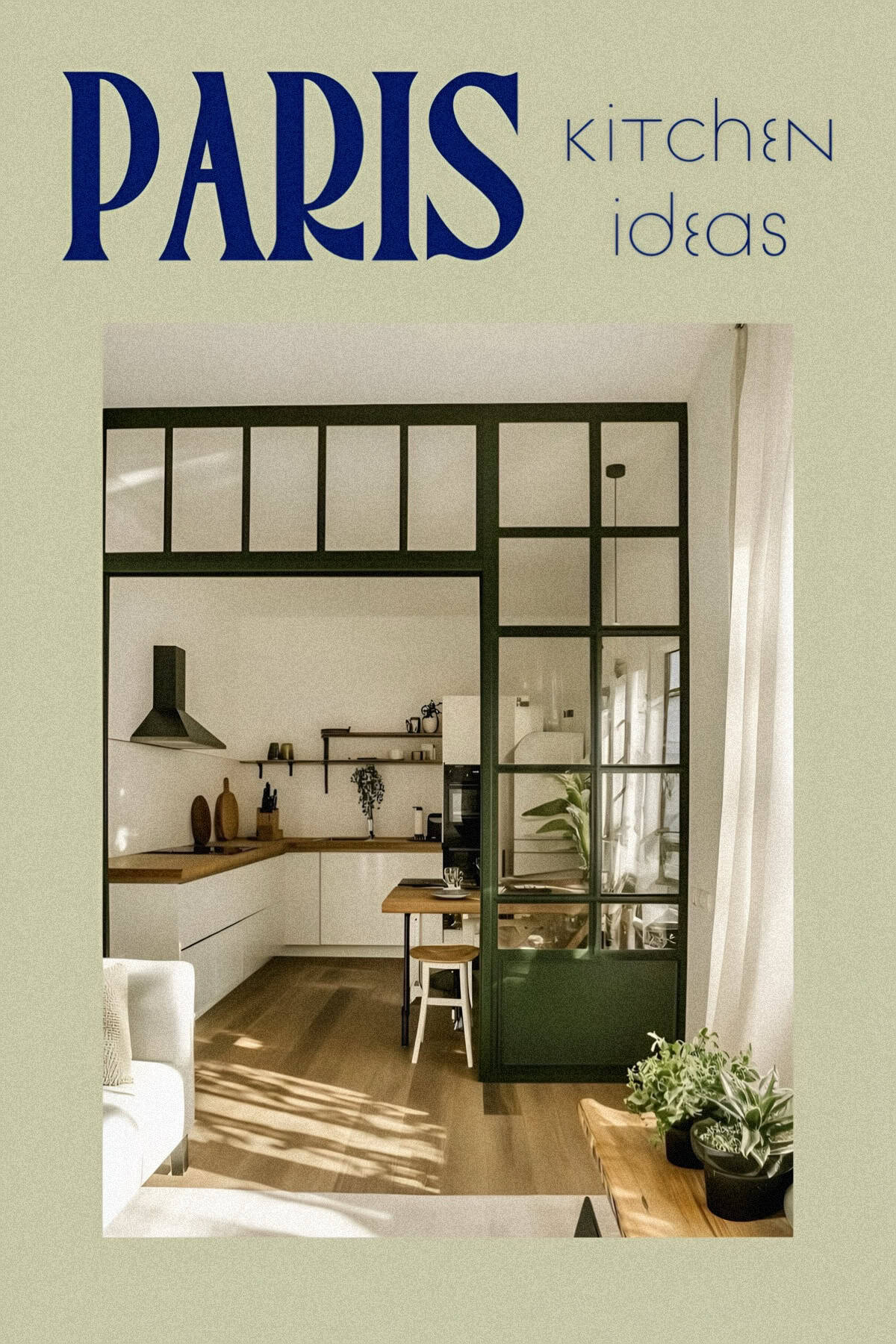
Parisian Kitchen Style: How to Get the Look
It happened a few weeks ago. I was rewatching Julie & Julia for the hundredth time — partly for the food, sure, but mostly for Meryl. I’m not ashamed to say I’d follow that woman through any role, but there’s something about her as Julia Child that makes you want to throw on an apron, melt a slab of butter, and start whisking like your life depends on it.
And then, there’s that kitchen.

Tiny. Blue(ish). Cozy. Cluttered in the best way. Every surface filled with purpose. It’s not sleek. It’s not showroom-perfect. But the truth? It works. It feels like Paris. And if you’ve ever tried to recreate that feeling in your own kitchen, you know it’s not about copying a layout or ordering a bunch of French stuff off Etsy. It’s about atmosphere. Story. Mood.
This article is for anyone who’s stood in their kitchen, wooden spoon in hand, and thought:
What would Julia do?
*Side note: in doing research for this piece, I came across this video of “The Caring For Julia Child’s Kitchen”. I found it wildly interesting. I hope you do too!
What Makes a Kitchen Feel Parisian?
If you’re picturing subway tile, a vintage stove, and a croissant on the counter — you’re not wrong. But that’s not the whole picture. A Parisian kitchen isn’t defined by any single piece. It’s a feeling. A certain offhand charm that comes from mixing eras, textures, and purpose.
So what really makes a kitchen feel Parisian?

Let’s break it down:
- It’s small — but never cramped. Paris kitchens are notoriously tiny, but they’re never treated as throwaway spaces. They’re lived-in. Every inch has meaning.
- It’s a little old, a little new. Think vintage fixtures paired with modern appliances, or weathered wood shelves above sleek countertops. The contrast is what makes it interesting.
- The patina is the point. You’ll often see chipped enamel, scuffed floors, or mismatched dishes — and it all just works.
- There’s always a table. Even if it’s tiny. Even if it’s just a ledge with a chair tucked underneath. Eating at the counter isn’t the vibe. You sit down. You light a candle. You make it a moment.
- It’s full of personality. Artwork in the kitchen? Yes. A green velvet chair? Sure. That weird copper fish mold? Why not. If it feels like you, it belongs.
Bottom line: A Parisian kitchen doesn’t try too hard. It just is.
It’s imperfect in all the right ways.

Small-Space Genius: Lessons from Paris Apartments
There’s small… and then there’s Paris small. And yet — the tiniest kitchens in the 6th arrondissement still manage to feel smarter (and sexier) than most sprawling American layouts.
No one understands this better than French interior designer Marianne Evennou. Her work is a love letter to the art of compact living:
- Miniature sinks carved into shallow stone countertops.
- Hidden fridges that vanish behind millwork.
- Induction cooktops that double as extra prep space.
She’s proof that 50 square feet — with the right mindset — can feel like a full chef’s kitchen.


What is the 3x4 Kitchen Rule?
The 3×4 kitchen rule is a layout principle where the key kitchen elements — stove, sink, and refrigerator — are arranged within a compact triangle, each side no longer than 4 feet.
This tight formation minimizes steps, maximizes flow, and makes even the smallest kitchens feel efficient and functional.
In Paris kitchens, you’ll see this rule in action all the time. The range is tucked beside the fridge, with a tiny sink opposite — all within arm’s reach. Overhead, a single rail holds the essentials. Below, drawers are divided with military precision. It’s a dance — and every step has already been choreographed.

Materials + Finishes That Define the Look
You know when you walk into a kitchen and it just feels Parisian — even if it’s tucked inside a Chicago brownstone or a Brooklyn walk-up? Nine times out of ten, it’s the finishes doing the heavy lifting.
French kitchens strike a specific balance: elegant but not flashy, grounded but not cold. And a big part of that comes down to the materials.
Here’s what shows up again and again:
- Marble countertops — honed, not polished, and veined like they’ve lived a life or two.
- Butcher’s block islands or counters, sanded smooth and worn in like a pair of vintage jeans.
- White subway tile — classic, never fussy, and usually with a visible grout line.
- Warm-toned metals — aged brass pulls, copper pots, even the occasional zinc hood.
- Neutral base palettes — off-whites, creams, warm grays — often paired with black or deep jewel-toned accents (think emerald green cabinets or sapphire-blue enamel cookware).
Nothing matches perfectly, and that’s the point.
The magic is in the layering — the tension between old and new, soft and strong, clean and storied.

What Are the Colors of Parisian Kitchens?
Parisian kitchens tend to favor soft neutrals, grounded with deeper hues and warmed up with natural textures or aged metals.
They’re not loud. They’re not trendy. They’re layered in that subtly cinematic way — like someone rubbed a little story into every surface:
- Cream walls + unlacquered brass = forever a favorite. A creamy backdrop lets vintage details and timeworn textures shine.
- White marble + navy cabinetry = dramatic without being cold. Add fluted wood, and it starts to feel like a Haussmannian salon.
- Pale gray + aged wood = humble, lived-in, rich with character. The kind of palette that always works, no matter the square footage.
Moss green or dusty rose = accent colors that add just enough personality without tipping things too cute or too modern.

Bistro Culture at Home
There’s a certain café sensibility that sneaks into every Paris kitchen. Even if you’re making eggs in a robe at 9am, it feels like you could be serving a tartine behind the counter at Café Charlot.
It’s less about theme, more about gesture — a few elements that instantly evoke that low-key, zinc-counter charm:
- Café chairs, Tolix stools, or bentwood stools tucked under a tiny bistro table.
- Café curtains on brass rods, just grazing the window sill.
Vintage lighting — think frosted glass pendants, wrought iron sconces, or even a chandelier in a kitchen the size of a broom closet.

A Peek Inside Real Parisian Kitchens
Before we wrap, I wanted to share a little visual inspo — a handful of Paris kitchens that caught my eye while falling down one of my favorite Internet rabbit holes. Some are old-world and charming, others lean modern or quirky. None of them are perfect, and that’s exactly why I love them.
These aren’t showroom kitchens. They’re real spaces — layered, personal, full of character. But they all carry that unmistakable Parisian mood.
Let’s take a look.











Bringing Paris Home
Remember that scene in Julie & Julia — the one where she’s whipping up Boeuf Bourguignon in a tiny blue kitchen, Meryl in pearls, the windows fogged, the butter sizzling? That’s the feeling we’re chasing. Not the perfect kitchen. Not the Pinterest kitchen. The one that feels like it’s already lived a little.
So maybe you start with a marble slab for your countertop butter station. Or a copper pot that hangs proudly from a hook. Or a bistro chair that turns your corner into a café.
Don’t wait until everything matches. Don’t worry if your fridge sticks out too far.
Parisian kitchens are built on character, not perfection.
And really — isn’t that the most delicious part?







